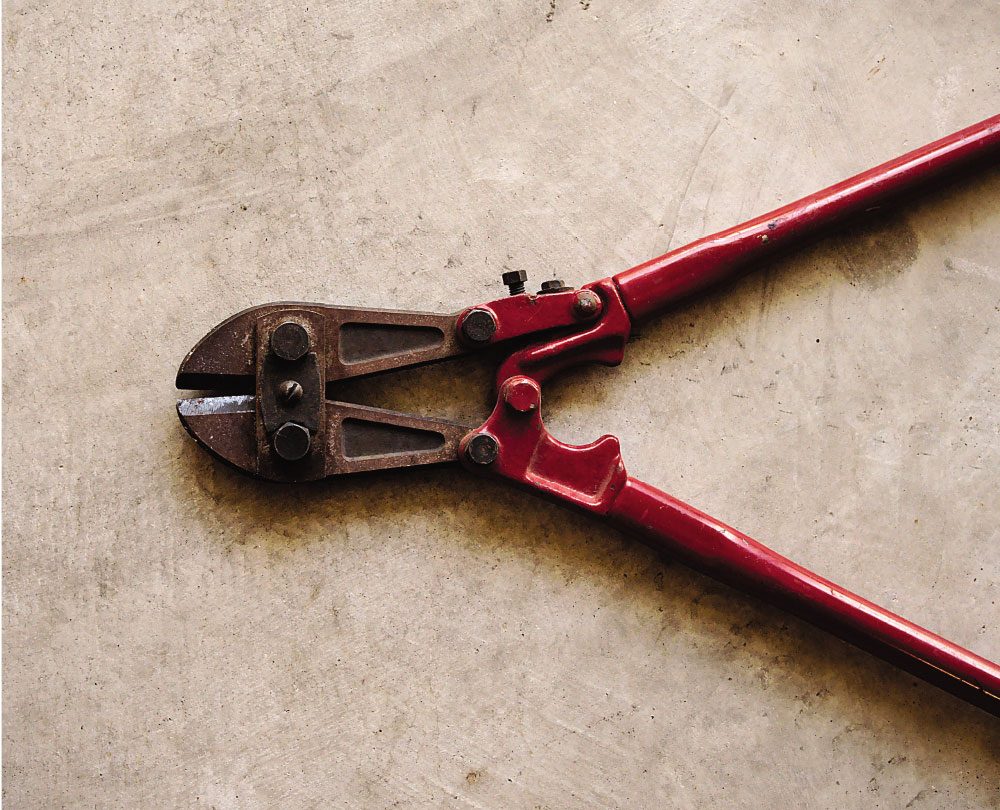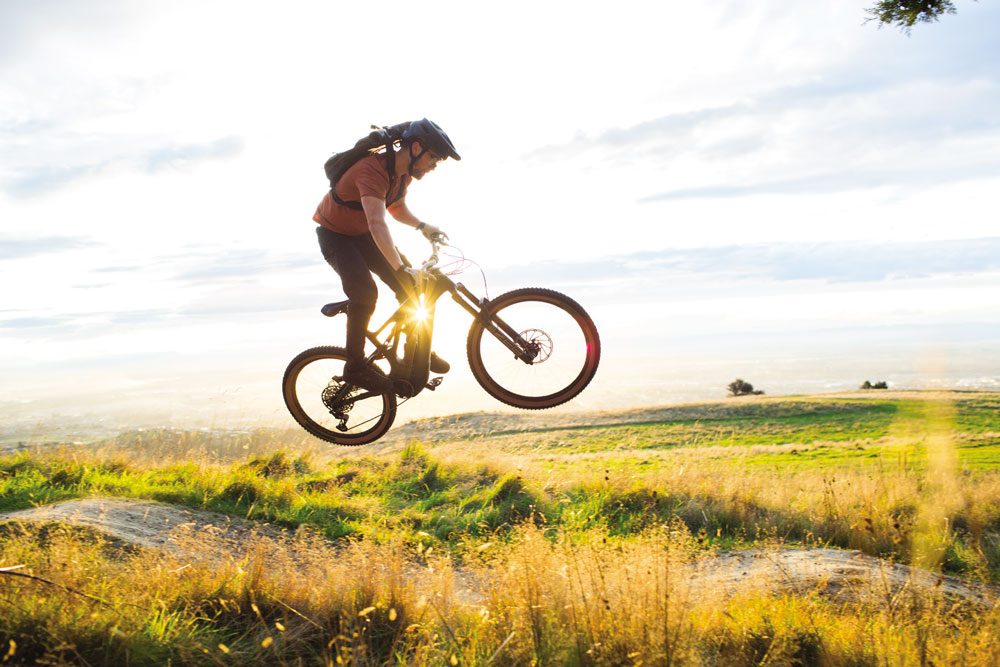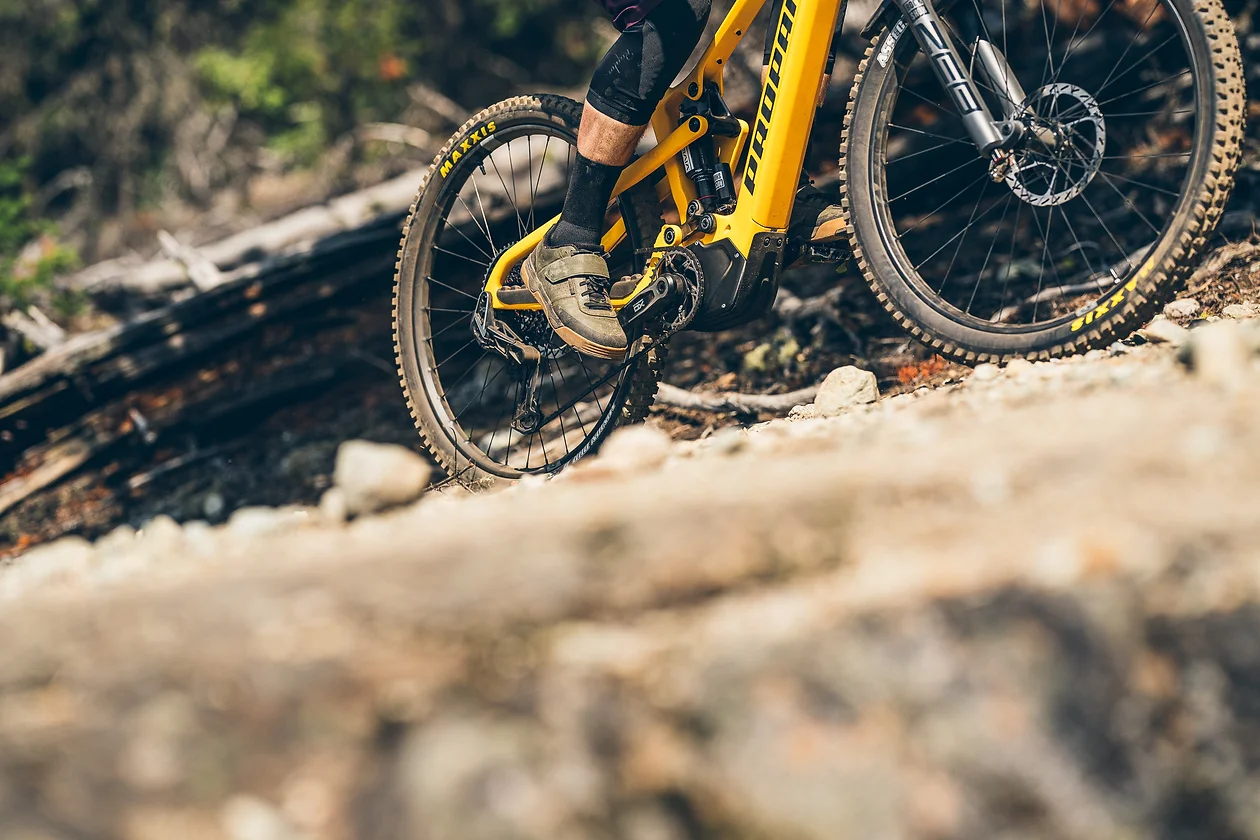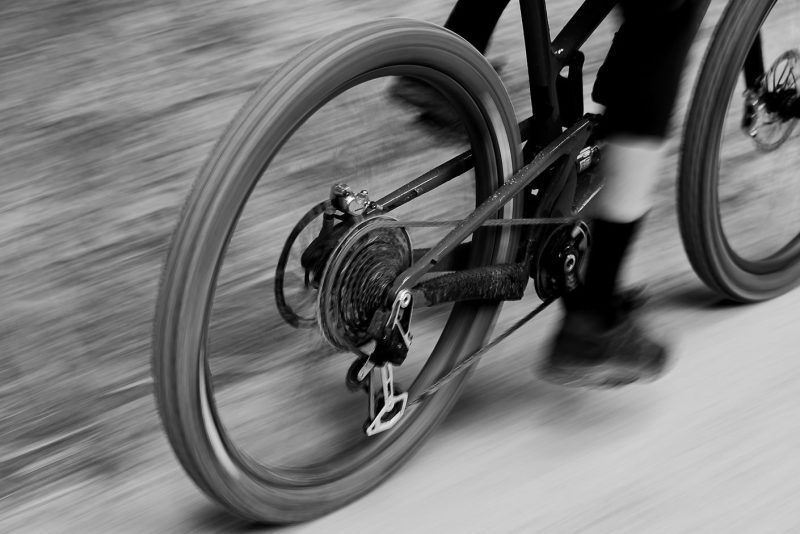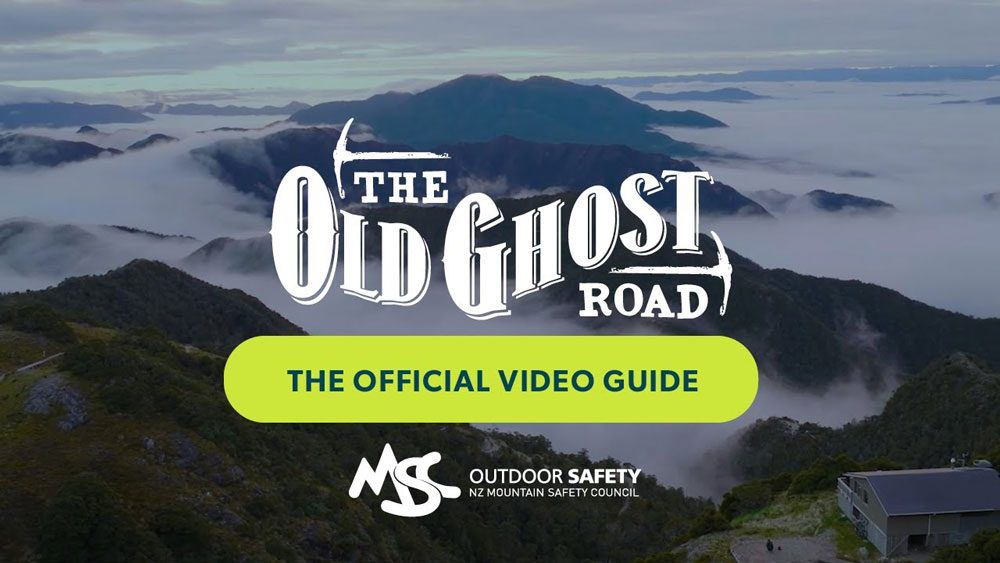Musings Issue 110
Words and illustration by Gaz Sullivan
“What I saw when we went for a day in Taupo was mind-boggling…”
We live in Rotorua. We came here for the forest, the trails, the lakes, and the space. It’s great to be able to go to the trails whenever the mood strikes me, which is most of the time. Many visits to the same place do not take the shine off – for me, anyway.
Even so, sometimes it’s good to go somewhere else and, for us, that is often Taupo.
Just north of town is a small, but beautifully formed, mountain bike park everybody calls Craters.
The trails surround a thermal area that was created as a side effect of the bores that drive the Wairakei thermal power station. It is called Craters of the Moon, and that is a fair sort of description of the place.
We have been riding there since the late 1980s, and the trails have evolved, slowly increasing in length and variety.
Craters has a character of its own. With a few exceptions, the trails are narrow and have a carpet of pine needles that results from fairly light traffic. There is not much elevation available, but the builders have been very creative with their use of what they have.
The thing that sets Craters apart for me, is the connectivity of the place and the way it is integrated with the trails that run along both sides of the Waikato River. A rider can set out from town – and I mean the centre of Taupo city – and ride singletrack to the mountain bike park. Then, they can ride trails for hours without having to ride any forestry road at all. The trails are not very technical, but they are fun – and there are places hidden away in Craters that are downright amazing.
A trail drops into a tight little canyon with a waterfall tumbling out from under a tangle of huge boulders, and I take the same photo of my bike parked next to it every time I visit. Can’t help myself. Another follows a different canyon past cliffs on one side and a precipitous drop to a thermally heated stream on the other. Climbing singletrack rewards riders with big views of mountains and lake. It’s easy to clock up 50 kilometres of continuous trail in an outing, maybe many more. I always run out of gas before I run out of options.
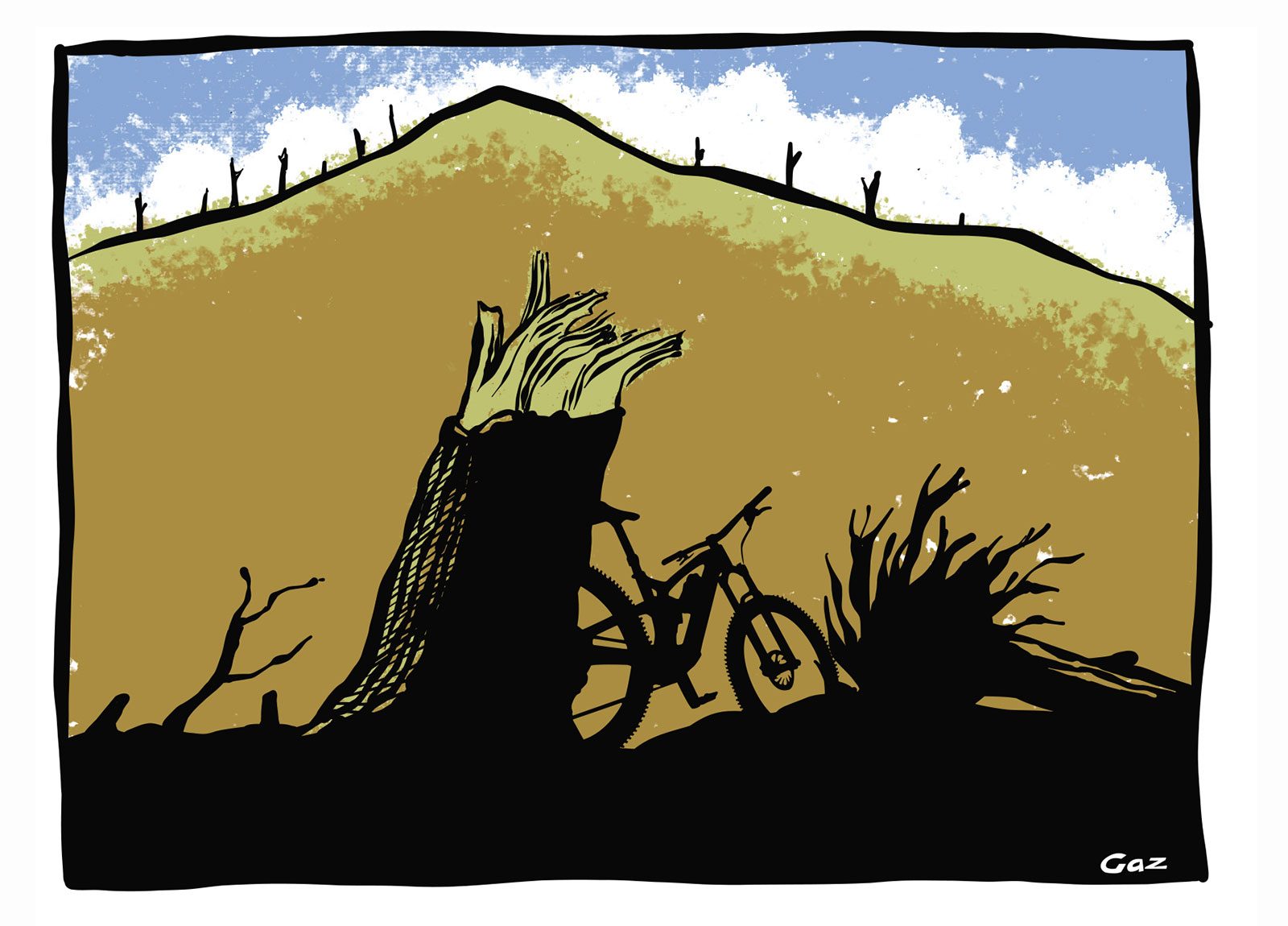
The Hub is a well-designed carpark with a cafe directly opposite. It sits one flat white and a muffin from town, and has a nifty underpass taking riders under the main road into Taupo – and the trails beyond.
Well, it did until Cyclone Gabrielle visited. The underpass is there, but Craters is closed. The carnage and heartbreak caused by that storm is well documented, and it may sound petty to be talking about the damage to a mountain bike park when so many people have lost everything, but what I saw when we went for a day in Taupo was mind- boggling. For those of us who dodged any of the serious effects of Gabrielle, it is a sobering snapshot of what happened.
The park was closed when we visited, and it will be for a long time. Could be six months, maybe more. The friendly woman in the Hub Cafe reckoned there were 15,000 trees down. The hill that is visible from the Hub looked like an active logging site, nearly every tree on the exposed slope facing the highway was laying on the ground. Areas further south had trees uprooted, trees snapped off halfway up, or split down the middle. It is an unbelievable mess, and under it all is a lovingly nurtured network of trails.
The ride down the river, past Huka Falls to Aratiatia and back along the other side, has reopened and so that is where I went. It’s bizarre how some trees stand, completely undamaged, right next to a tangle of trunks and branches that are torn and smashed.
Like most places we ride, the trails at Craters didn’t make themselves. They were built by the usual combination of passionate volunteers, people drafted in to help passionate volunteers, and – on a few sections – commercial trail builders. It took decades of applied enthusiasm because, while new stuff was being created, the existing stuff had to be maintained. Again, like most places we go to ride.
Some of the places we go, that are shared with commercial foresters, get periodically wrecked by harvesting – but that is the deal. We know that going in. We try to get started in young trees, to get maximum bang out of our thinly stretched buck.
When a weather system lays waste to a whole trail system in one go, those plans become meaningless. The work in front of the Taupo team is huge – a restoration job that won’t really start until the forestry crews have done what they can to make the place safe to enter.
One thing you can be sure of: it will re-open. The same enthusiasm that built Craters, will rebuild it.
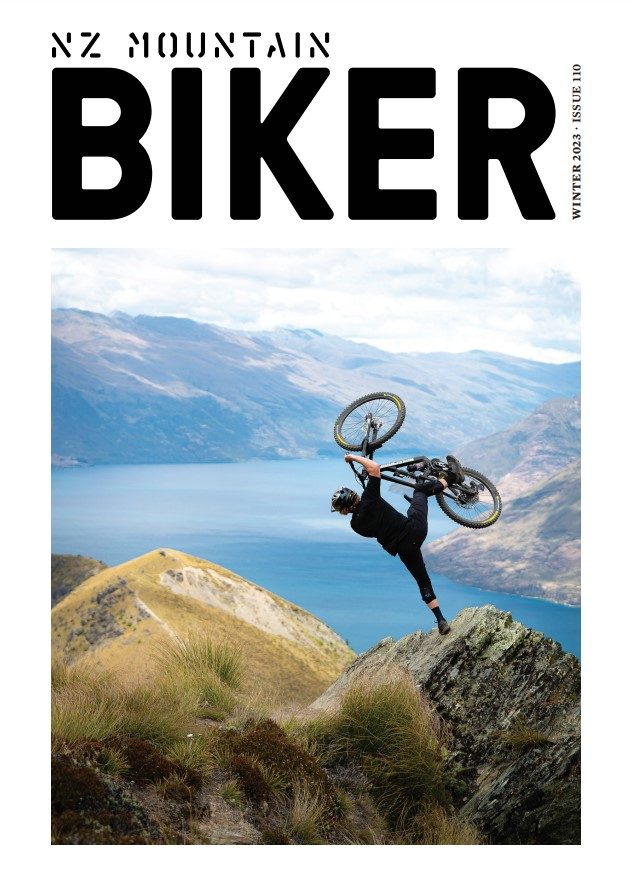
Bosch eBike systems take digital theft protection to a new level
Words: Alex Stevens
Ebike sales have been on the rise for the last few years and, unfortunately, so have eBike thefts. Chances are you saw the recent story about one particular enthusiast who was so keen to get his hands on his dream bike that he broke into his local store and pedalled away on a $17,000 rig.
Once upon a time, a lock and chain used to be enough to deter potential thieves. Now it seems our prized possessions are not safe even when locked away inside a shop with a burglar alarm system. The bike thief did forget one important thing: the charger. The store owner is hopeful this might be his downfall and buying a new one might be how he gets caught. Fingers crossed.

There is actually one system which could have helped save the day here, or at least led to a speedy retrieval of the stolen bike. Bosch’s new eBike Alarm function provides more safety and better protection. The alarm is able to tell users the location of their eBike and sounds an alarm in the event of suspicious movements.
We tested it and can confirm that ‘suspicious movements’ include moving the bike just a couple of centimetres when you’re in the middle of servicing it and forget that the alarm is enabled. We were treated to an ear-piercing screech that would surely be enough to deter even the most determined thief. If, however, the eBike is stolen, you would receive a push notification on your smartphone along with location tracking via the eBike Flow app.
After a one-time installation via the eBike Flow app, your smartphone serves as a digital key. If you switch off your eBike, eBike Alarm activates automatically. There’s a two-stage system to the alarm and the smart motion detector can tell whether your eBike has been moved a little or a lot. In the case of slight movements, the eBike system emits several short warning tones as a deterrent.
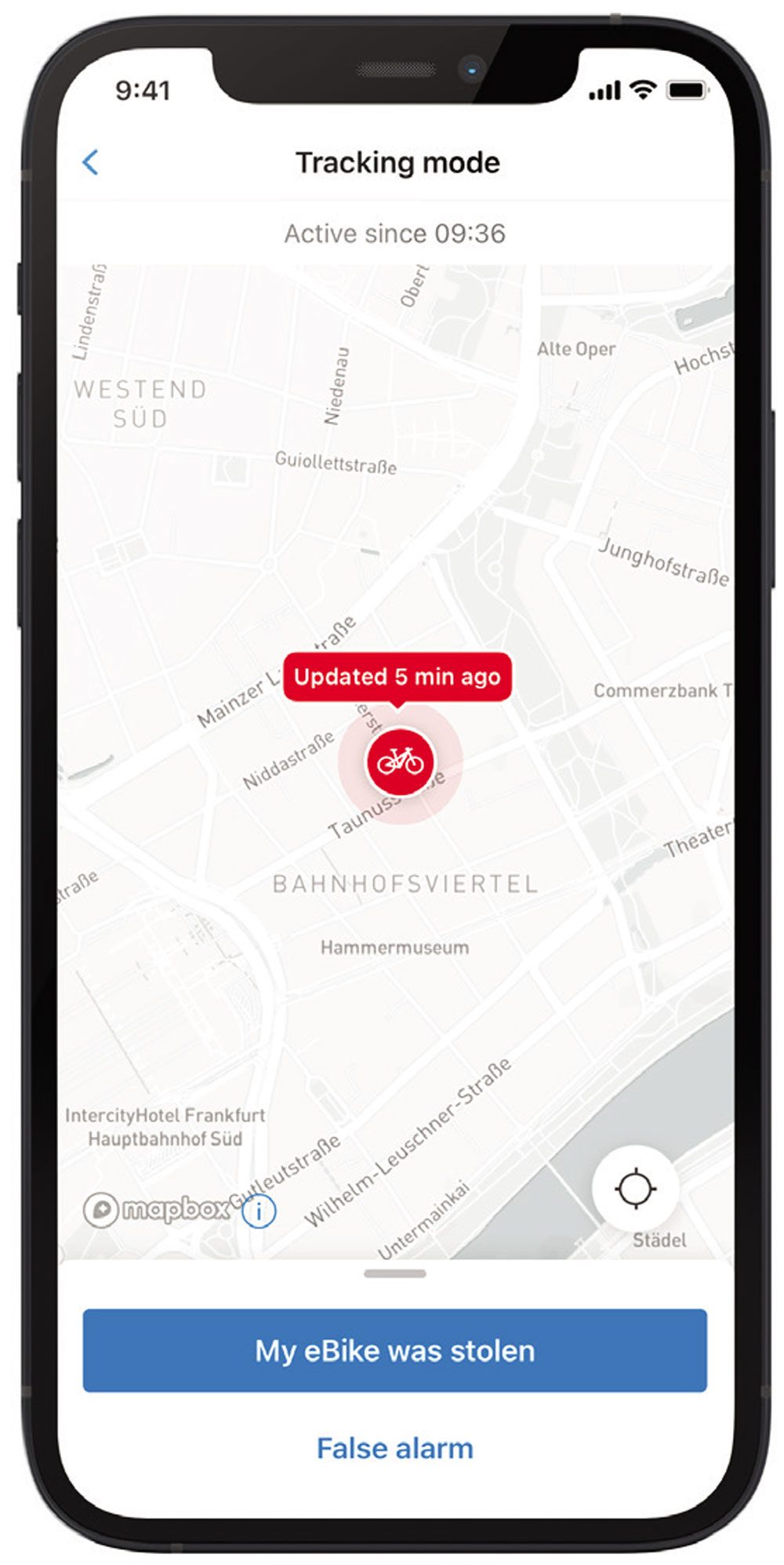
If the eBike is moved a lot and the matching digital key, i.e. your smartphone, is not nearby, it sends out a loud alarm tone as well as a notification to the smartphone. To use eBike Alarm, the eBike Lock feature must be activated in the eBike Flow app and the new ConnectModule installed on the eBike by a specialist dealer. It can be installed on any Bosch Smart System-equipped bike. The paid component is installed on the eBike and contains a radio and GNSS module, a separate battery and various sensors. You can only use eBike Alarm after installing this component.
Users who decide to purchase a ConnectModule, receive eBike Alarm for twelve months at no additional cost. After that, they can decide whether they want to continue using the digital service at a fee – eBike Alarm is not charged for automatically.
After the free trial year, the feature costs 4.99 euros per month or 39.99 euros per year. The subscription is charged in euros since Bosch is based in Germany, but the service is available further afield, including Aotearoa.
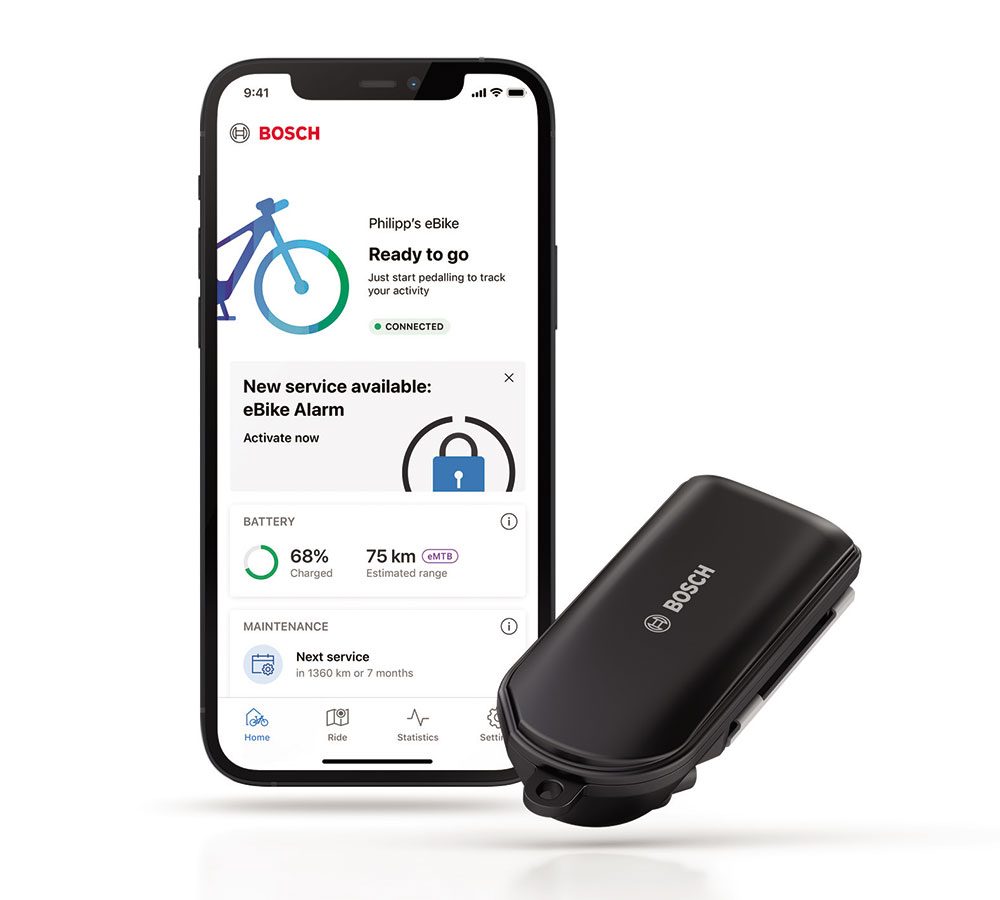

Red tape runs down volunteer enthusiasm
Words: Meagan Robertson
Photography: Cameron Mackenzie & Henry Jaine
As a longtime supporter of volunteer trail builders, Trail Fund NZ increased its focus on advocacy four years ago. The catalyst was when it came to light that the classification of bikes as ‘vehicles’, on public conservation land, was causing significant delays to projects around the country and meant that iconic trails – including several Great Rides – did not comply. Since then, it’s been a slow ride towards resolving the issue, and several passionate volunteers are feeling defeated.
“Old Ghost Road, Great Lake Trail, Paparoa, Timber Trail… these are only a few of the country’s Great Rides that have sections that don’t comply with the local Conservation Management Strategy,” explains Trail Fund Advocacy Manager, Jimmy Young. “It is understood that numerous Great Rides have sections that don’t comply, and dozens of other iconic mountain bike trails are also caught in the crosshairs.”
The knot at the bottom of these cross hairs appears to be the Conservation Act 1987, under which bicycles are considered vehicles. However, most (if not all) of these trails have been built since then, with DOC permission an integral part of the planning and execution processes.
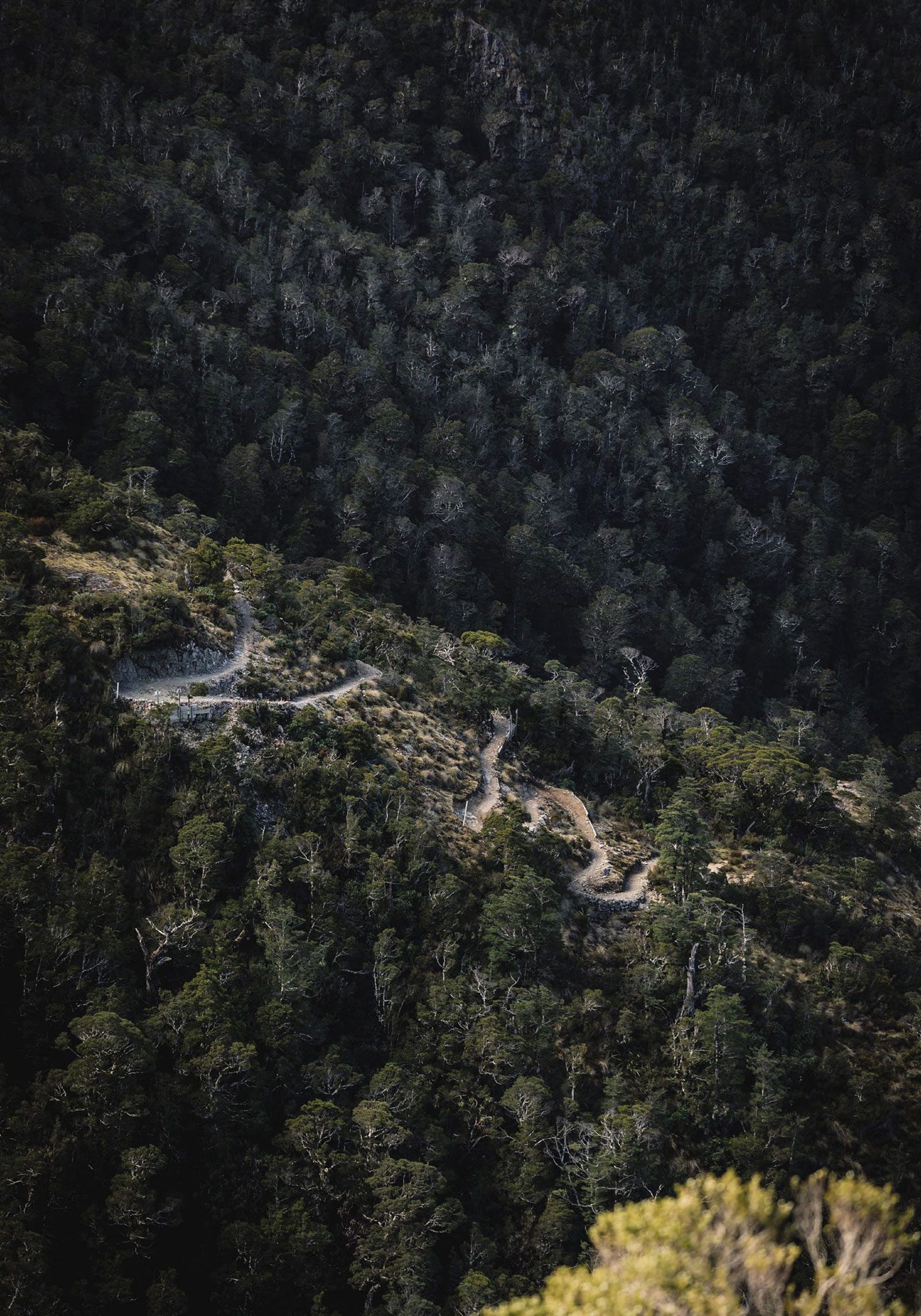
What changed?
At some point around 2018, Department of Conservation (DOC) staff started taking a different approach towards applications for cycle trails on department land. According to DOC, it is due to increased interest in biking around the country, but cycle trail managers and administrators say there appears to have been a complete reinterpretation of the 2005 legislation that overlaid the conservation management strategies.
“The ‘new’ approach was that a region’s Conservation Management Strategy (CMS) needed to identify the locations and use of vehicles (bikes in our case) and other forms of transport on land owned or administered by the department,” explains Jimmy. “However, DOC now wanted the locations of current and proposed cycle trails to be listed in the strategies before an application could be made to build them.”
Basically, bikes can only be used on trails explicitly specified (in a list) in the CMS, as opposed to assessing bikes on trails through an ‘effects–based approach’, which is the approach Trail Fund and other bike organisations are suggesting.
While this might not be an issue if the CMS’ were reviewed every few years, this is far from the case in New Zealand. CMS’ are only meant to be reviewed every 10 years and, in reality, seven of the 16 are current, two are under review, one is under development and six are overdue for review. Some are more than 20 years old.
Taupō trails on trial
Bike Taupō, which has built tracks and provided community representation for all Taupō cyclists since 2002, was one of the first clubs to face DOC’s ‘new’ interpretation of the Act. Chairperson, Pete Masters, and committee member, Rowan Sapsford, reached out to Trail Fund, and Jimmy has been working with them and other groups since then.
“We have more than 200kms of trails that we manage and approximately 160kms of these are on public conservation land,” explains Rowan. “A number of them were purpose–built by Bike Taupo, including the Great Lake Trails and the Rotary Ride, which were developed back in 2003.
“Approximately four years ago we were told that these trails were ultra vires (which means an act that lies beyond the authority of a corporation to perform), as they were not scheduled in the local CMS, despite all trails being developed with signed management agreements with the Department.”
Rowan says this has been extremely problematic for several trails on public conservation land managed by Bike Taupō, as they have not been able to renew management agreements or access funding – despite support from the local DOC office.
This prompted Bike Taupō to start working with Trail Fund and other trail groups around the country to request that DOC move away from the scheduling approach. Four year later, the discussion continues.
“We believe an effects–based approach, where trails are assessed against the values at place rather than just being written off because bikes will be ridden on them, should be adopted,” says Rowan.
The club felt like maybe it was making headway when the Department recently agreed that a new cycle trail within the Taupo Tongariro Conservancy, which is not scheduled in the CMS, will be able to proceed.
“While this is great news for the club and the community on this one trail, it’s not reassuring overall, as we’ve been told by the Department that this will not apply to any other trails in the area,” says Pete. “This makes no sense, and feels like a cop out if the Department planners are going to take a consistent approach.”
With management agreements for some of the club’s trails up for renewal soon, Bike Taupo says it will be a real test of the Department’s approach.
“We have awesome support from the local DOC team, but I guess we will have to wait and see if the Department refuses to renew our management agreements for biking trails which have been in place for 20 years, such as the Rotary Ride between Taupō and Huka falls.”

Kaihu cut short?
On 10 June, 150 local cyclists were thrilled to cross the new Ahikiwi Bridge at the official opening of stage one of the Kaihu Valley Trail, a 30–kilometre route between Dargaville and Kaihu comprising two off–road trail sections currently linked by low–volume roads.
Once complete, the Kaihu Valley Trail in Northland is intended to allow cyclists and walkers to wind their way through forest and farmland, and along the Kaihu River from Dargaville to Donnelly’s Crossing – a distance of some 45km. It will largely follow the historic rail line built in 1896 to service the kauri industry. The top third of this old rail corridor is stewardship land administered by DOC.
However, excitement was muted due to news received just weeks before that the DOC concession for Stage 2 of the trail – which would take riders off the narrow state highway and reduce climbing – was declined.
In late 2022, DOC staff were asked if there were any issues related to the concession. They advised no, then took until May 2023 to decline the application.
Local Steve Gwilliam from the project team says the concession application was made in mid–2021, and the team reached out to Trail Fund for support in early 2023, in desperation.
“They declined our application despite granting a concession a year before, for the bridges and trail in Kaiwaka township (50km away), which specifically states ‘walking and cycling’,” says Steve. “This should have set a precedent or provided exceptional circumstances for consideration.
“It’s disappointing that it took 20 months for DOC to respond to the project team and advise the application for cycling was inconsistent with the General Policy Statement (GPS) and CMS,” says Steve. “Even more disappointing is that the corridor, which has little conservation value, is farmed (stock, vehicles etc) by adjoining farmers ‘without’ any concession, which is in complete breach of the GPS and CMS. In our view, it’s likely a cycle way would offer more protection to the remaining historic rail corridor and features, than the current illegal farming operations.”
Ironically, Northland MP, Willow–Jean Prime, who is also Conservation Minister, joined Kaipara District Council deputy mayor, Jonathan Larsen, in cutting the ribbon at a June 10 ceremony hosted by Ahikiwi Marae in Kaihu.
“This is an investment in the region,” said Prime. “It is good for locals and their wellbeing and also for visitors who come to the region.”
The track will form part of existing and proposed trails traversing the whole Northland region, including the Kauri Coast Cycleway Heartland Ride, which runs southward from Rawene on the Hokianga Harbour – and which itself links to the Twin Coast Cycle Trail from the Bay of Islands to Hokianga, one of the 23 Great Rides of New Zealand.
The trail has received significant investment from various sources, including $4 million from the Infrastructure Reference Group, a $600,000 contribution from Waka Kotahi and funding through the government’s COVID–19 Response and Recovery Fund from MBIE.
Unfortunately, the MBIE funding had a deadline and, due to the delay on DOC’s part, Steve says the opportunity to build the section of trail that had the most benefit to riders – by taking them off the narrow state highway and public roads with 100km/hr traffic and no shoulders, taking away substantial climbs and travelling through some iconic northland topography – has now been missed.
The concession application has been amended to be ‘walking–only’ in hopes it might get traction, but has heard nothing since.
“It’s pretty demoralising to put in so much effort and just feel like you get nowhere, despite everyone being seemingly on board in public,” says Steve.
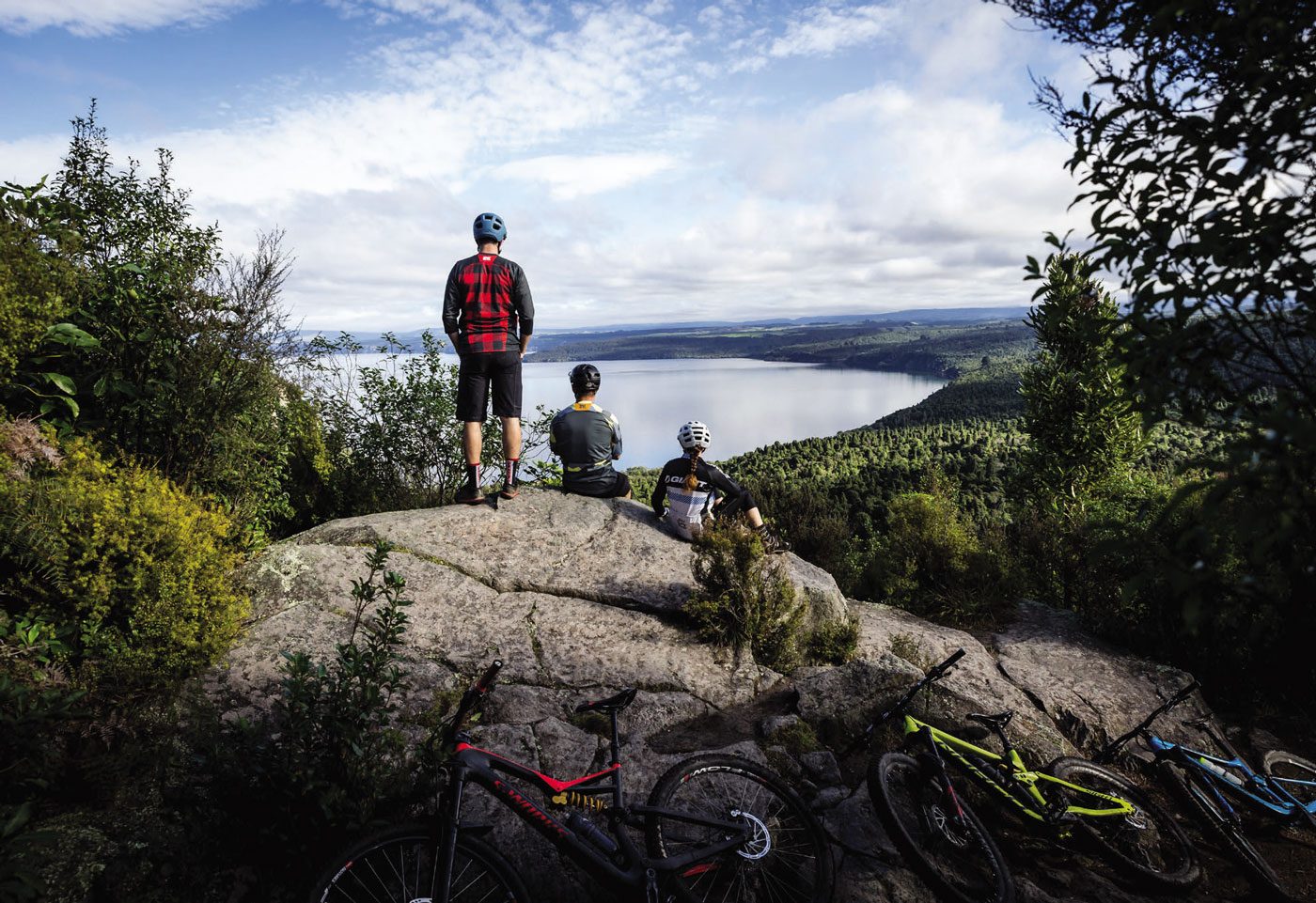
Under pressure
Despite the frustrations, many bike organisations are loathe to publicly criticise local departments for fear it could make things worse, or because there’s generally a good relationship locally. However, one region’s results suggest public pressure could do the trick.
This is what happened in Otago, where the department – under pressure to consider many new cycle trails, including the Kawarau Gorge link between Queenstown and Cromwell funded by the Government as part of a grand cycleway from Central Otago to Dunedin – was forced to take action.
DOC launched a partial review of the 2016 Otago CMS, which attracted almost 1750 public submissions in 2019, and a decision listing 112 possible cycle trail sites was issued in July 2022.
However, the proposals still needed to go through an assessment process, including engagement with Ngāi Tahu and consultation with the Otago Conservation Board, and organisations spent thousands of hours covering every piece of land where they might want to develop a biking track.
“While it’s great that a partial review means there’s the possibility of new cycle trails that are in line with the CMS, retaining this approach isn’t the answer,” says Jimmy. “What we need is an effective mechanism for assessing tracks on their merits and impacts – not one approach for walking tracks and another for cycling.”
Looking ahead
Despite little progress in three years, Trail Fund and the organisations it’s been working with continue to strive for a solution.
“We really want to work with DOC on this for the cycling stakeholders and provide greater access opportunities for recreation,” says Jimmy. “We are keen to be part of the solution and assist DOC to come up with a pragmatic solution that can solve the issue permanently.
“We all want a result that legitimises the activity of cycling on public conservation land and values the time and resources that committed volunteers put into trails around the country, week after week.”

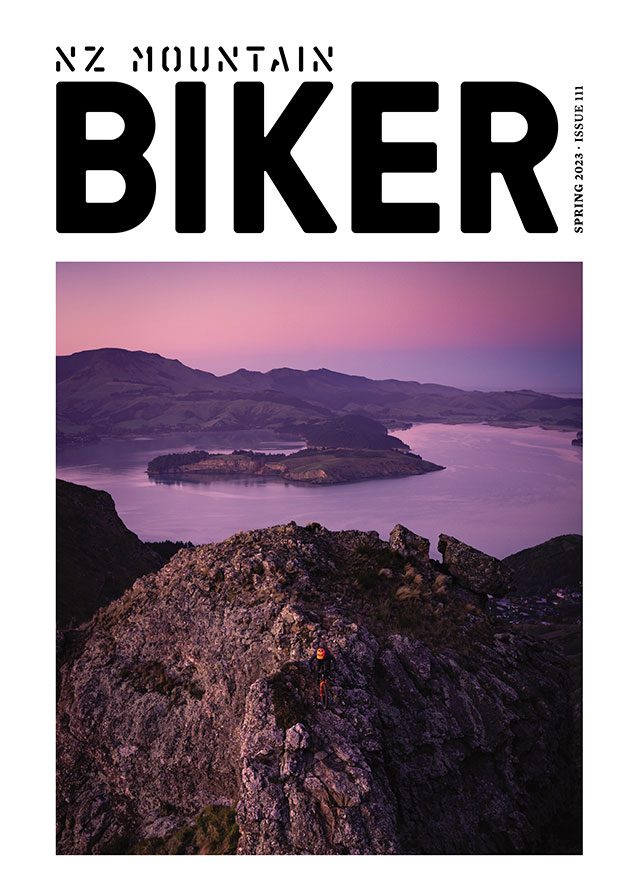
Musings
Words and illustration by Gaz Sullivan
“I hit ‘Buy Now’ and moved into the post-purchase second-guessing period…”
A couple of weeks ago, the stars aligned, and I added two new bikes to the stable at once. By a combination of circumstances that are best left unexplored, I stepped up to a brand new trail bike. Part of that exciting transaction was keeping all of my previous trail bike, except the frame.
As many of you will understand, there are already more bikes in my shed than I really have time to use. Each is suited to a particular purpose, and there is surprisingly little redundancy across the fleet. Some of them get out several times a week, some of them might hang there for months, waiting for the day when what they are useful for is what I am going to have a crack at.
So, with that in mind, a sensible person would turn the pile of pretty nice parts into cash via some sort of online marketplace.
That is what I set out to do. Honest.
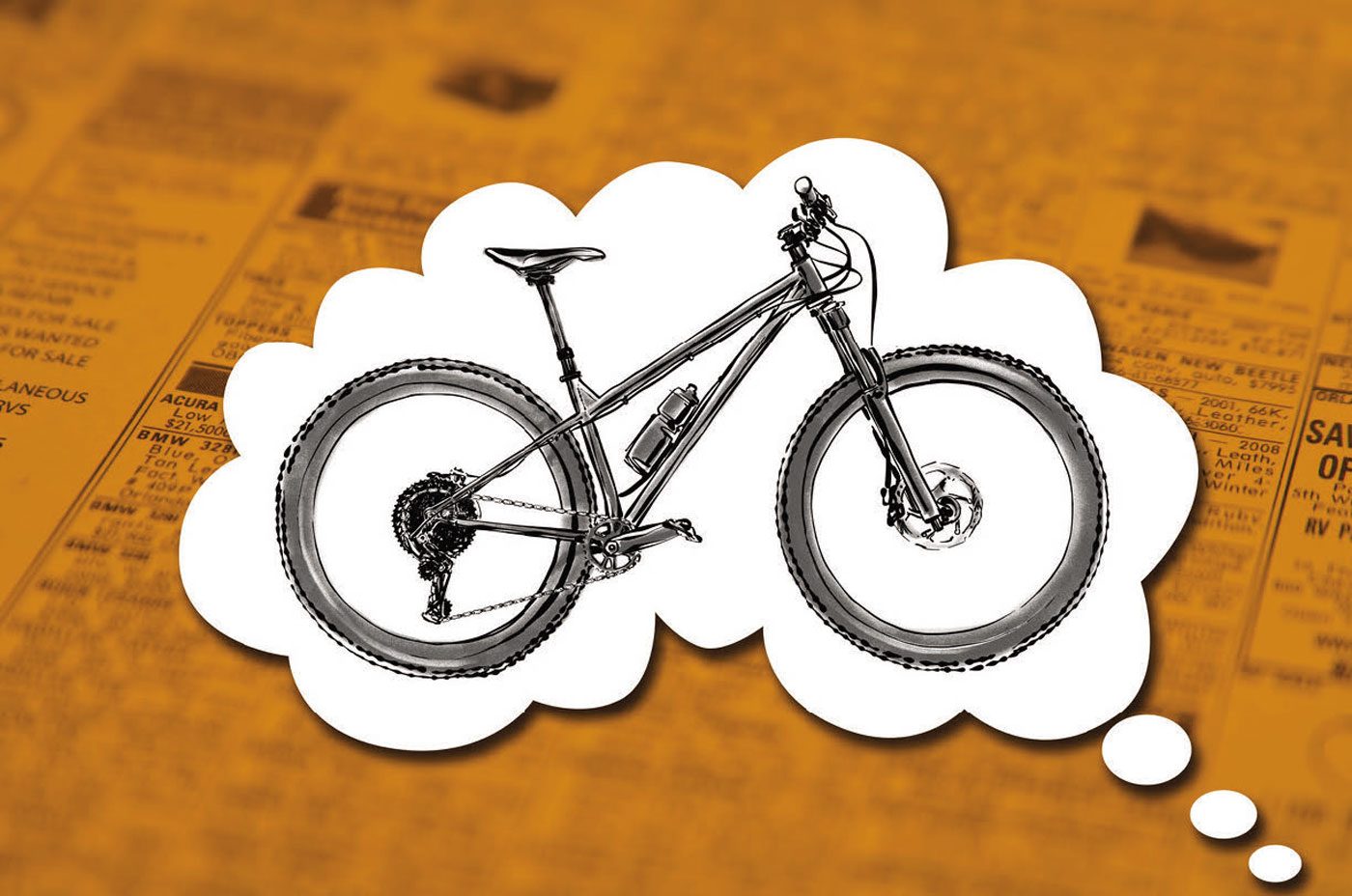
My first step was to browse around, trying to establish a value for all this stuff.
There were similar parts with prices ranging from depressingly low to delusionally high.
And there were a lot of things available. I started thinking about the sheer tedium of listing everything, communicating with tyre-kickers, and then trying to send a pair of wheels to Invercargill.
Wondering if anybody would want the entire pile, and because I have a short attention span, I wandered over to the ‘frames’ department on the off chance there might be some path to follow there.
The very first thing I saw was a brand-new hardtail, my size, and completely compatible with everything in my parts trove except the bottom bracket. Plus, it was steel, which made it cool and very desirable.
A short but fierce mental argument followed. I bet you have endured similar battles. One part of my brain was of the opinion that a seat tube diameter matching my functional-but-virtually-worthless dropper post was a sign from heaven, and I should immediately buy the frame before anybody else did. Another part kept chiming in with the various things I could do with my winnings if I carried on with the original plan and ditched the parts. The first part came back with the very sound reasoning that if I acquired the frame, built it up, and then fell on hard times, a complete bike would be easier to sell than a pile of parts, and there would be nothing left over except a rear shock. Which would be left over anyway, and can be sold. It might even pay for the required bottom bracket.
The ‘buy the frame’ faction had the upper hand, but the other side somewhat lamely countered with a comment about the number of bikes already in the shed, pointing out how rarely some of them escape into the wild.
That was fairly easy to ignore – we are well-practiced in doing exactly that.
The final straw was somebody asking a question about the frame while I was looking at it.
I never found out what the question was, and didn’t wait for the answer. I hit ‘Buy Now’ and moved into the post-purchase second-guessing period.
The excitement of the new possession was far more powerful than the slowly fading doubts, and soon enough the frame turned up and the parts were bolted on.
The bike came out even better than Mr Positive Brain imagined, and the naysaying lame-o in the negative has not been heard of much since, except for a brief appearance the first time we took the new beast into the trails.
A sort of ‘see? I told you this was a dumb idea’ popped out on the first bit of fast, choppy trail, as my body tried to adjust to life with no rear suspension. How we rode places like Moab, Utah on a rigid hardtail is beyond my ability to recollect, but we did, and I have doggedly continued to try to do so.
I am not really getting any closer to floating over the ground like I should, and rides on the new dually are certainly much easier on the joints and fillings. But me and my mental go-for-it are still very happy we went for it.
Nothing like a different bike to make a ride fresh and new.

Beer Guide Issue 108
‘No alcohol’ is the boom category at the moment, and New Zealand craft breweries make some of the best non-alcoholic beverages in the world.
You’re reading a mountain biking magazine. You love being fit and getting the most out of your body and being in the outdoors.
That makes you a target audience for “lifestyle” beers — which means low and no alcohol, low carb and gluten-free options.
These are sometimes called “better for you” options. And the good news is that “better for you” also means better tasting these days.
Let’s go through some recommendations in all these categories.
THE HEROES OF ZEROES
‘No alcohol’ is the boom category at the moment. I can put my hand on my heart and tell you that New Zealand craft breweries make some of the best non-alcoholic beverages in the world. Believe me, I’ve tried everything on offer.
It’s fair to say imported beers never taste as good as they would if you bought them in the country of origin. “Beer should be drunk in the shadow of the brewery”, is a phrase that still holds true because travel of any kind takes the edge off even the best beer. That’s even more so for non-alcoholic beverages because alcohol is a preservative and therefore, a zero-alcohol beer is not going to travel anywhere near as well as something with alcohol in it, so I’d avoid imported beers in this category.
It’s worth nothing that the legal definition on non-alcoholic in New Zealand is less than 1.15 per cent ABV, which seems high by world standards. While that’s the legal benchmark, most breweries work to the accepted guideline of less than 0.5 per cent ABV.
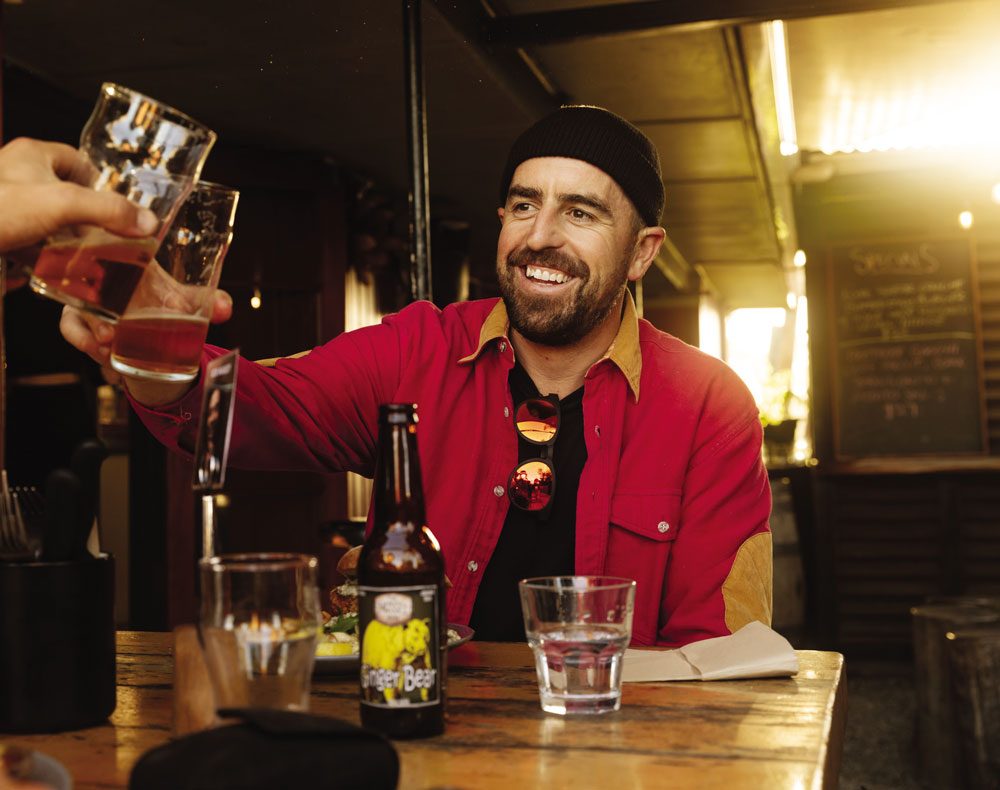
Bach All Day Hazy IPA
Bach created the breakthrough non-alc craft beer with their All Day IPA and this hazy version is a step up from that. Stick with the original if you like clear beer, but this hazy has heaps more flavour.
Garage Project Tiny
Almost a cult beer now because it’s from Garage Project. Lightly lemony hoppy.
Brothers Beer Fill Yer Boots
Another hazy (and as a rule hazies work really well in this category because of the fatter mouthfeel). This has a nice tang of grassy bitterness.
Good George Virtual Reality
A superb offering from Good George. Up there with Garage Project and Bach.
Sawmill Bare Beer
The one non-alc pale ale in this line-up and the only one in a bottle. This has a bite more bitterness than the hazies.
LOW CARB ULTRA TRENDY
While non-alcoholic beers are trending, there’s nothing growing as fast as low-carb beers.
There are many reasons to choose a low carb beer — it could be that you’re on a ketogenic diet, or just trying to reduce the carbohydrate you consume. Or it could be for more important reasons, such as having Type 1 diabetes.
Beers labelled “low carb” have been tested and should come with nutritional panel telling you how many carbs per 100ml they contain. A good guideline is that a low carb beer should have 1-2g of carbohydrate per 100ml.
It’s important to note that low carb does not equal low calorie, though in the case of the beers listed here, some are definitely lower in calories as well. A beer’s ABV (alcohol by volume) will play a big part in the total calories as alcohol sits somewhere between carbohydrate and fat in its calorie density. So, if cutting calories is your thing, do check the labels.
The best thing about modern low carb beers is that they are super- flavoursome. Brewers use a special enzyme, naturally found in malt, to help ferment out any residual sugars.
That has a number of effects on the beer. First, the lack of residual sugar means the beer doesn’t feel as heavy in your mouth. In fact, low carb beers are often very light-bodied and quaffable. Second, low carb beers finish very dry compared with normal beers, which many drinkers prefer anyway.
Low carb pale ales and IPAs are a great place to start if you’re after flavoursome low carb beers. That because the extra hop additions add both mouthfeel, through hop oils, and added flavour. Plus fruity varieties of hops can add a perception of sweetness that covers up the lack of sugar.
Epic Blue Pale Ale
4.8%, Carbs 1g/100ml As you’d expect from Epic, it has great hop flavour — juicy and citrusy — that’s well integrated into the light body. It’s so good for a low carb beer that it made it into the New World Beer & Cider Awards Top-30 on its merits as a pale ale, that’s how tasty it is.
Deep Creek LoCal IPA
3.5% ABV, Carbs 2g/100ml A super low ABV beer compared to others in the range, but you’d struggle to pick it. Brilliantly executed in terms of balance and flavour. A gold medal winner at the 2022 Australian International Beer Awards. Very low calorie count to boot.
Urbanaut Miami Brut Lager
5%, Carbs 1.5g/100ml Packed to the seams with sweet passionfruit and lime hop flavours. A sparkling carbonation and punchy hops on a light and airy body. You won’t pick it as low carb. Urbanaut’s Copacabana IPA is also officially low carb now and is one of the best beers on the market, full-stop.
Emerson’s Super Quench
Pacific Pilsner 4%, Carbs 1.9g/100ml Super pretty beer to look at and, frankly, delicious. Hoppy, refreshing and spritzy light without any soda water notes.
Bach Brut Ultra IPA
4.4%, Carbs 1.7g/100ml Super-fruity with aroma and hop flavour rolling out of the glass thanks to a massive dry-hop bill that features all your favourites: Citra, Mosaic, Riwaka, and Rakau.
LIGHT BEERS ON THE RISE
We don’t use the term “light” the way Americans do to reference their very pale lagers. Here, light means low alcohol — generally regarded as anything below 2.5 percent.
The range of beers in this category is more expansive than in the zero and low carb range, as that little bit of ABV helps create a canvas for flavour.
North End Petit Luna
A clever little beer. Hibiscus brings some fruity character and a lovely pink colour. Kaffir lime coupled with spicy Belgian yeast does some heavy lifting when it comes to flavour. Slightly tart and spritzy.
Sunshine Light Pilsner
Smells like the real deal and tastes great too. The body, naturally, is a little shallow, but shallow can be good: like standing knee deep in the ocean and having the waves splash around your legs. A hoppy aftertaste, with a broad bitterness.
Croucher Low Rider Small IPA
Probably New Zealand’s most celebrated low-alcohol beer. In many ways, it’s almost become the flagship beer for Rotorua’s Croucher Brewing — a remarkable feat for such a low ABV product. It’s changed and evolved over the years into an almost perfect distillation of all the best aromas and flavours of an IPA.
Townshend Half Mast
Typically, of Townshend beers, this is all about balance and the fruity expressive hops are perfectly restrained to match the 2.2 percent base. A wee gem.
8 Wired Lo-Fi
This hoppy sour is sharp as a tack with pinging citrus and light acidity it packs way more flavour that should be feasible at 2 percent ABV.
GLUTEN FREE
It used to be that gluten free was a dirty word in beer (in short they tasted foul) but Upper Hutt’s Kereru Brewing have changed the game dramatically. They are unrivalled when it comes to gluten free beer.
Their Hazee, a gluten-free hazy pale ale, has to be tried to be believed. It’s as good as a normal hazy pale and you don’t even notice the gluten-free aspect. They have a standard gluten-free APA, nice and hoppy, and a clever raspberry-infused version of their original Auro, a golden ale. And they’ve just released a gluten-free Mocha Porter. You can order a mixed box of the gluten-free beers from their website.
Words: Michael Donaldson
Photography: Henry Jaine.
Musings Issue 108
Words and illustration by Gaz Sullivan
“Leaving the power setting on high makes me feel both good and bad at the same time.”
Elsewhere in this very magazine, I wrote a piece about my time aboard the Trek EXe, my first extended period atop an electric-assist machine. I finished by saying: “when I get one”.
Going trail riding on the e-bike is ridiculous fun. The e-assist provides the buzz of riding a mountain bike fast, almost anywhere. The speed available on a flattish trail makes the chore of climbing to the top of a downhill run almost unnecessary. And of course, if you do want a downhill run or three, they are easier to get to.
Surely that is what we look for when we go mountain biking?
It is hard to express exactly why we ride. Sometimes it is for that endorphin payoff available when a difficult task is performed as well as we can do it. Everybody has their own little envelope of bike riding ability and being out there in the woods doing your best is part of why we go out. The desire to do that more often, to make more of your bike time inhabiting that zone, is what has driven the whole phenomenon of shuttling, and for that matter, adding electricity.

A pile of watts that can’t be delivered personally gets us more of that sweet spot we look for.
Well, maybe.
Meanwhile, the Luddite in me has been quietly niggling away in the back of my mind.
I really like the simplicity of basic bikes. I like steel frames, five of the six rideable bikes in my stable are ferrous. I like bikes I can work on myself, which means they have to be simple. I can dismantle and reassemble any of my steel bikes without needing assistance or therapy afterwards.
My carbon, fully-suspended mountain bike with hydraulic brakes and tubeless tyres is bristling with things I don’t feel qualified to mess around with. Yes, I know, these are personal shortcomings I could address, but adding electronics, several batteries and a motor won’t help.
I like going out on my bike with no fixed plan, and riding until I can’t. Having a digital readout on the top tube telling me how much range I have left is a different experience. After a dozen rides I have figured out how much of the battery is required to get me up various hills, in various power modes. Because I know my patch pretty well, I can wring the thing dry most rides. I took great pleasure in arriving home with the readout showing less than ten percent. Several times it was two, and on one occasion, one. How that would work out in unknown territory is something I have yet to experience.
Part of bike riding is also sort of masochistic. People say that getting fitter doesn’t make things easier, just faster. I like to feel how I feel… hard to explain to the outsider but getting to a particular part of a certain ride and feeling slightly less discomfort than the previous episode in that place is a good thing. Adding an external power source doesn’t remove that possibility, but it makes it harder to judge.
Maybe that is the niggling thought I have. When I am on the E, hooning up the climbing section of the jungle trail that is my favourite five kilometres in our local patch, the most accurate description of what I am feeling is probably guilt.
Like, this should be harder. I can make it harder, by buttoning down the power. But I don’t, because the power is what makes this section with the diagonal roots across the trail so much fun.
And leaving the power setting on high makes me feel both good and bad at the same time.
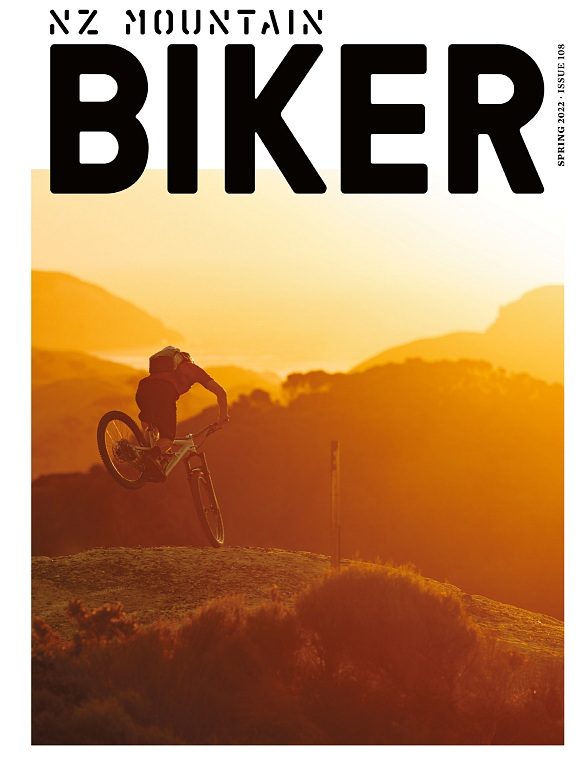
Trail Builder: The Gift That Keeps Giving
Words: Meagan Robertson
Photography: Specialized
Thanks to its Soil Searching initiative — created to recognise, celebrate and support trail builders — Specialized has helped enable future trail building efforts through one local legend and a generous Trail Fund donation.
Talk about making the most of winter — while some hung up their bikes to avoid battering sloppy trails, and others jetted off for an overdue overseas trip, Specialized set its sights on finding and rewarding the nation’s top trail builder with a limited edition Soil Searching Specialized Levo, then auctioning off a second and donating all the proceeds — an incredible $17, 850! — to Trail Fund NZ.
BUILT FOR TRAIL BUILDERS
Designed for trail building, and to reward trail builders, the Mountain Guardian is one of 50 Soil Searching Specialized Levos produced worldwide. Featuring the Specialized Soil Searching logo to reiterate the importance of trail building while following sustainable building practices, the custom made eBike boasts Soil Searching Paint, RockShox Zeb Select + Fork, RockShox Super Deluxe Select + Shock, SRAM XO1 Groupset, Code RS Brakes, Soil Searching Tyres, Roval Traverse Alloy Wheels and TCU2 Display.
In mid-July, Specialized put the call out to ensure one of the two Mountain Guardians in New Zealand landed in the hands of New Zealand’s best trail builder. In a country known for its incredibly high number of volunteers, the nominations came in hard and fast, with more than 100 committed and talented trail builders in the running.
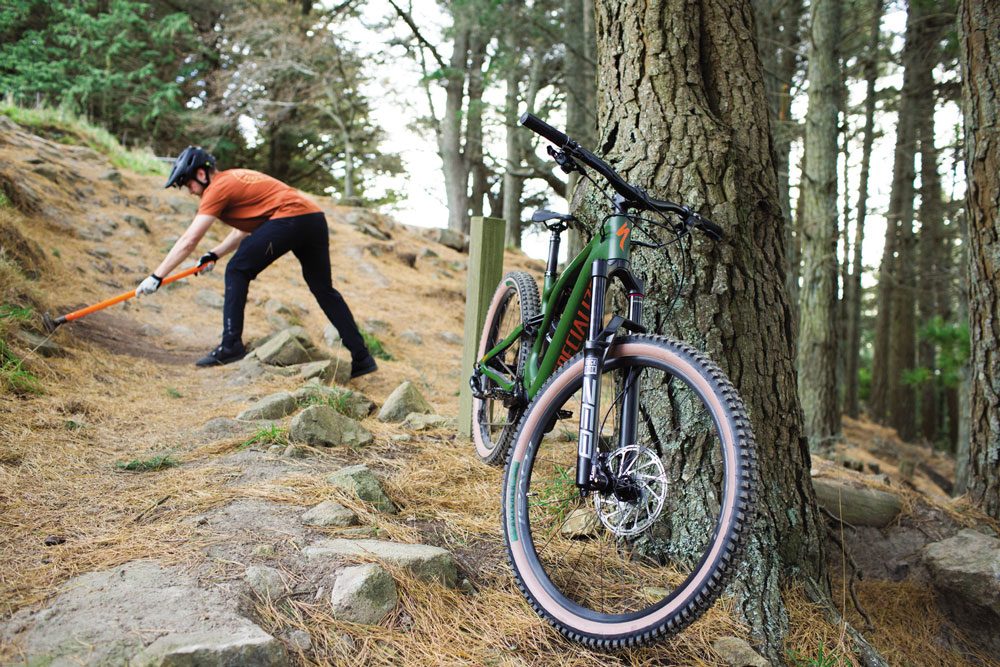
THE REAL DEAL
With only one Mountain Guardian to give, Specialized NZ reviewed every application and, according to Specialized’s Marketing and Events Coordinator, Ben Crowley, choosing the winner was no easy task.
“Trail builders are the unsung heroes of mountain biking, and we are committed to changing that by recognising, celebrating, and supporting the trail builders who help shape our sport and our stoke,” explained Ben.
“That said, there are a lot of them, and so many are volunteering in a way that is truly outstanding that it made the choice incredible difficult. In the end, we decided on a guy that sums up what Soil Searching is all about — Marty Richards.”
A key part of the Cable Bay Adventure Park trail crew based in Nelson, Marty is a trail builder that leads by example.
“Marty is a serial volunteer whose contributions to various projects have improved the trail offerings for all in Nelson and, over the past three years, he has had direct involvement with all of the 18 trails built at Cable Bay,” says Richard Ussher.
“Marty is super approachable and always willing to help or give advice to new trail builders. He never asks for anything, or expects anything in return, and truly does it for the love of mountain biking. He has inspired and imparted a lot of knowledge to a wide group of people, which has helped grow the competence of trail builders in the region.
“Probably the biggest influence he has had is with the ‘Sunday School’ team. This is a group of teenagers from a variety of backgrounds who come out to the Adventure Park to regularly dig and maintain trails with Marty. Nicknamed ‘Dad’ in the group chat due to his mentoring, Marty organises transportation, oversees the trail building and drives shuttles for them afterwards.
“The Sunday School crew often do some of the toughest yards on the sections that others shy away from, and it is easy to see the positive influence impact he has had on them.”
Richard says Marty is so committed to ensuring the best experience for Cable Bay riders that he has — largely by himself — built a 1km walking track for the sole purpose of getting walkers and other non-mountain bike users off the main exit trail at the park.
“It is hard to overstate what a positive member of the mountain bike community he is. He is never looking for recognition and just gets on and does what he loves — digging and riding. The region would undoubtably be significantly poorer without his massive efforts.”
Marty was absolutely thrilled to receive the Mountain Guardian and is already putting it to good use!
“I feel so privileged to know such an awesome group of people and so humbled from the support I’ve received from the Nelson MTB community and Cable Bay Trail Crew,” said Marty.
“It’s been quite overwhelming. I think I’ll go hide in the bush for a bit… and go dig a track.”

Marty Richards.
PAYING IT FORWARD
With one Mountain Guardian out the door, Specialized looked to further support trail building through a different channel — Trail Fund NZ.
“We created Specialized Soil Searching to fuel and support the energy and passion of the trail building community,” says Ben. “So, we thought, what better way to do that than fundraise for an organisation that is already doing that on a regular basis?”
Founded in 2012, Trail Fund NZ is a not-for-profit organisation, run solely by volunteers, supporting the development and maintenance of publicly available, environmentally sensitive and sustainable mountain bike-accessible trails in New Zealand. It is also committed to providing funding for — and education on — trail building, as well as advocating on behalf of mountain bikers to Government.
Since its inception, Trail Fund has distributed more than 150 grants — totaling more than $400,000 — to a wide variety of mountain bike trails. From Thames to Taupo to Wanaka to Bluff, from Grade 5 singletrack to skills parks, Trail Fund has tried to cater for riders of all abilities around the country.
And now, thanks to Specialized donating the proceeds of the second Mountain Guardian to Trail Fund NZ, the organisation can provide even more grants than normal in the coming months.
“We are so thrilled to be able to pass on the money raised by Specialized to trail building groups around the country using our well-established funding process,” says Trail Fund president, Hasely Lobb.
“This is the most substantial donation we have received to date and it’s great to see bike brands investing in the trails their customers love to ride.”
Thanks to the donation, Trail Fund’s next funding round is our biggest in many years, with four grants of up to $4,000 available. The deadline is 1 December. For more details, see the ‘Get Funded’ section on trailfund.org.nz

SRAM Eagle Powertrain
Removing the front derailleur.
Removing the wires.
Removing the derailleur hanger.
Removing barriers.
Now, with Eagle Powertrain, we’ve removed the compromises.
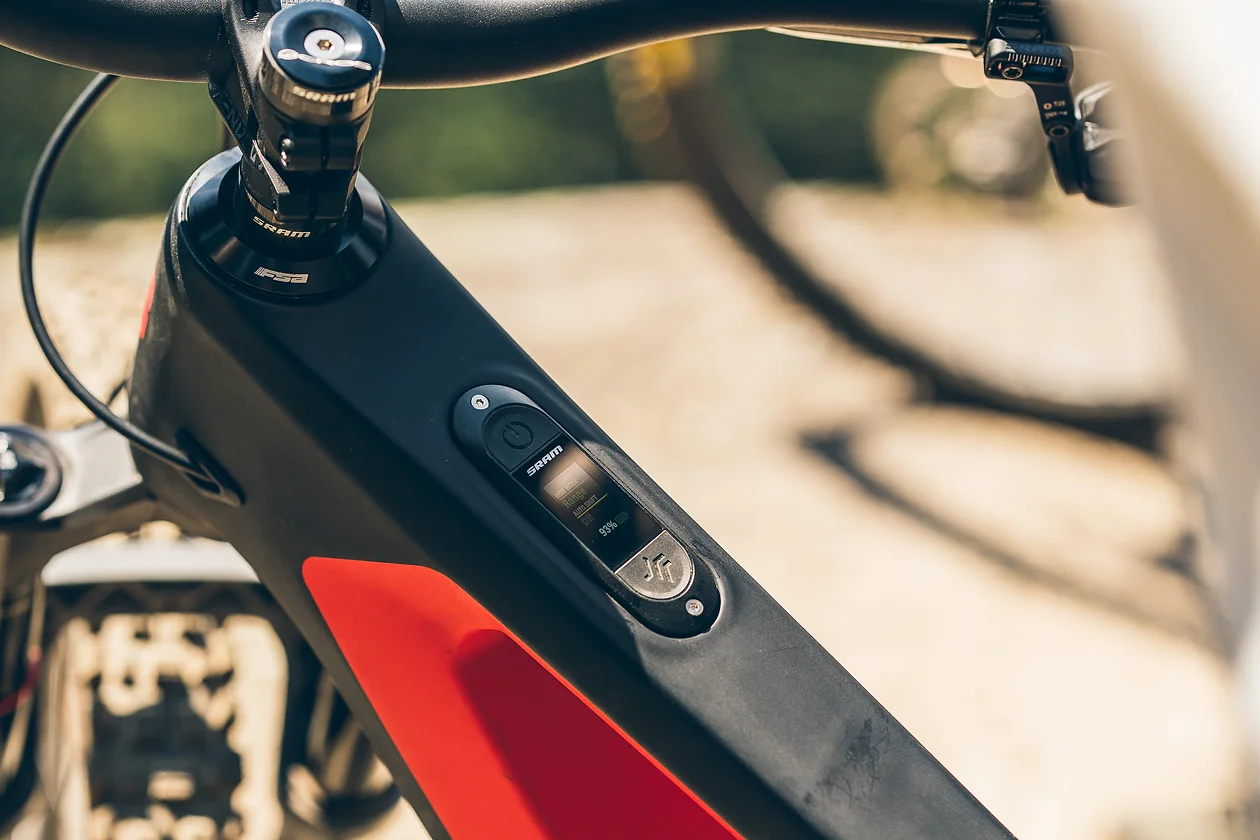
Go for Eagle Powertrain.
The complete, seamless and holistic E-MTB system designed to turn on uninterrupted flow.
Go for the better ride.
Eagle Powertrain is inspired innovation, radical simplicity, unmatched integration with Eagle Transmission, clean and simple rider control, and AXS enabled personalization.
Go for unbelievable ease.
The Eagle Powertrain power tune applies natural feeling, traction generating, technical move completing, controllable power to the rear wheel. Developed and proven with BlackBox athletes and profiled to work in concert with how real riders, like you, actually pedal.
Only possible with Eagle.
With Eagle Transmission the harder you pedal, the better it shifts. Nowhere is this more apparent than when paired with Eagle Powertrain.
Total. Pod. Control.
The versatility of AXS pod controllers lets you assign all powertrain rider commands – without the need to compromise the bar with the clutter of additional remotes and bar mounted displays. What’s left? The ultra-clean and intelligent wireless cockpit, indicative of any Eagle AXS system.
Better Batteries. Better everything.
The unique Eagle Powertrain battery streamlines the interface between battery and drive unit. Delivering even more power in a smaller area and super elegant form factor for more pleasing frame silhouettes.
A fully integrated AXS ecosystem allows new levels of personalization for Eagle Powertrain.
Push your buttons.
Layout your cockpit exactly as you desire – AXS makes it possible to assign Pod buttons.
Spin to win or crank it out? Both.
Fine tune the feel of Eagle Powertrain Auto Shift features for terrain or how you’re feeling. Power, in the palm of your hand. The Eagle Powertrain AXS App makes the off-bike experience as rich as the on-bike experience.
Eagle Powertrain has already won the toughest race series out there: The UCI EWS-E.
Born from Blackbox.
Riding with Eagle Powertrain, Yannick Pontal (BlackBox Test Pilot Program) became the reigning champion in the 2022 EWS-E series. His feedback partnership with our engineers and development team allowed SRAM to build a race-winning system at home on the circuit and on your local trails.
“Our focus is always on the rider first. The goal of the system was to provide the rider with a complete, wireless, integrated E-MTB system tuned specifically for performance mountain biking. We simplified the ride allowing the rider to focus on the trail.”
CONTROLS
AXS BRIDGE DISPLAY
INTUITIVE RIDER EXPERIENCE
The Eagle Powertrain AXS Bridge Display is the sophisticated nerve center of the entire system, giving you a control unit that greatly simplifies the experience.
Think of it as an onboard extension of the AXS App, providing everything in a brilliantly illuminated, full color, waterproof display, protected under Gorilla Glass.
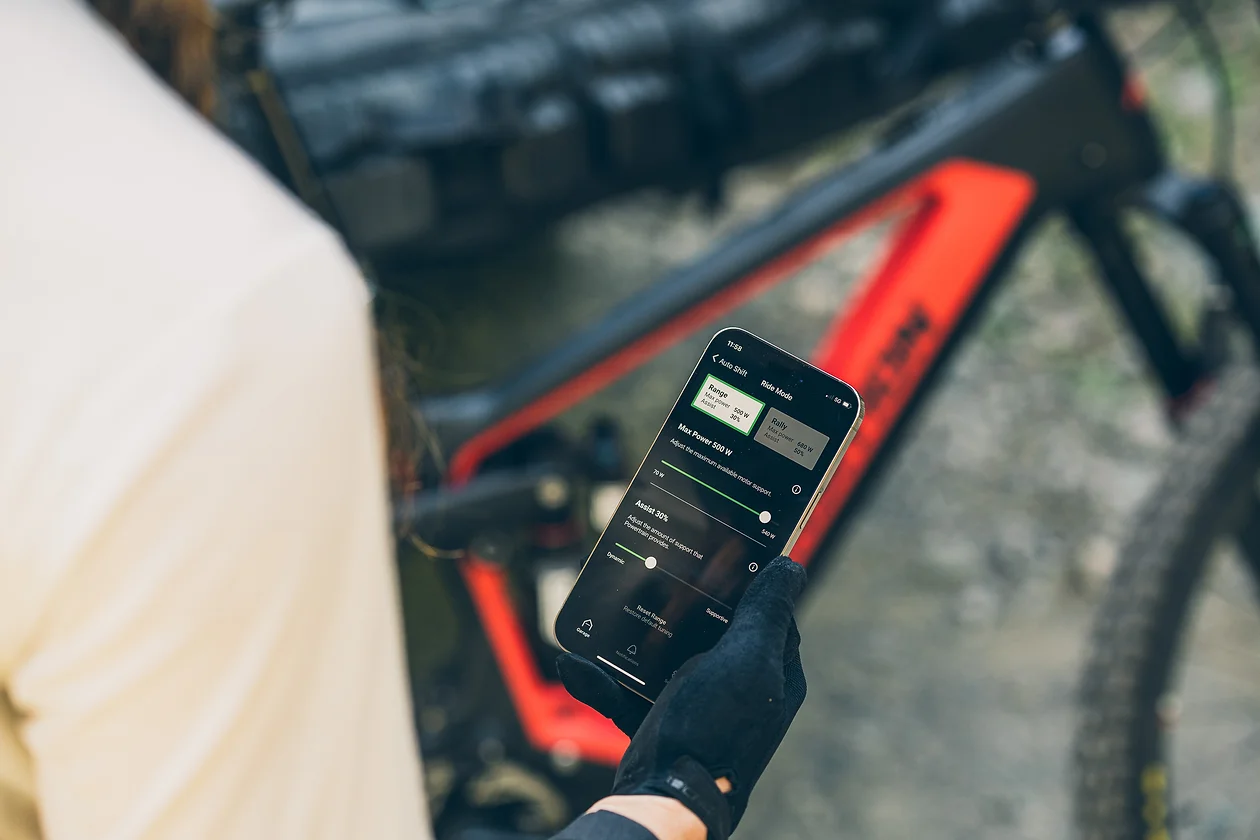
PODS
FAMILIAR CONTACT POINTS
Toggle between Range and Rally modes. Control your Rockshox Reverb AXS dropper post. Press and hold to multi shift Eagle Transmission. AXS control, encompasses everything.
“Our Auto Shift algorithm is like a bike’s sixth sense, deciding when to shift so riders can stay laser-focused on their ride. It’s not just smart tech, it’s the ultimate riding companion.”
Dominique Fuss and Victor Freyssinet Electrical and Software Engineers
What could feel more natural than not having to think about shifting while you ride? Eagle Powertrain Auto Shift is a feat that senses and translates rider input to deliver an incredibly intuitive experience. Planning an attack or simply want to override the system? Auto Shift seamlessly accepts rider commands, to be ready for your next move.
Eagle Powertrain Coast Shift allows the chainring to move freely from the cranks, letting you shift while coasting. Why? Opening the possibilities of shift anywhere performance (whether pedaling or not) puts you in total control, even when the terrain ahead isn’t.
Two ways to get the most.
Reducing complexity with two support modes that can be easily adjusted and customized for individual desire. Where others give you unnecessary power modes and confusing names, Eagle Powertrain uses just two.
Range Mode
With the touch of a Pod button, toggle to Range Mode for longer routes, easier terrain or when conserving power is a good move.
Rally Mode
Toggle to Rally Mode for shorter rides or whenever you want access to the capabilities of power. Keep it simple.
“It was an incredible opportunity to develop a fully holistic system. All components–from the display to the derailleur–forming one perfectly synced unit. Our wireless AXS technology enabled us to create features like Auto Shift, Coast Shift and the limitless options of Eagle Transmission provide shifting under full load.
Everything in control with the AXS App.
The Eagle Powertrain AXS App makes the off-bike experience as rich as the on bike experience. From customizing drive unit power output to simply checking battery life while off the bike, the AXS App lets you view and fine-tune a host of features, right from your phone.
COMPACT AND FULL SIZE BATTERY
Powering the Eagle Powertrain. Utilizing a unique C-shaped clip-in or optional slide-in interface, the Eagle Powertrain Battery helps to support partner OE manufacturers in their quest to keep the weight low and centered. It comes in at a 630Wh compact or 720Wh full size and is easily removable with a single allen key.
SRAM DRIVE UNIT Powered by BROSE
So much more than merely a motor, the Eagle Powertrain Drive Unit has been engineered with a reimagined power delivery tune that replicates a far more natural pedaling experience. It’s a feel only made possible by our holistic approach to the entire system, where we called upon proven motor hardware and paired it with Eagle Transmission. It’s an approach that took learnings from short-comings that plague other motors, such as common power losses from super-hard riding, and gave us the opportunity to go further by utilizing things such as heat-resistant materials that provide superior thermal performance and enable longer power delivery.

The Next Episode: SRAM Eagle Transmission
I have to admit - we have it pretty good with today's mountain bikes, and the products that hang from them. Everything is pretty damn dialed, and reliable too. Things have really come on in the last 10 years and I'd say one of the big driving factors behind that was the introduction of the 1by drivetrain.
Eleven years ago, SRAM shook up the mountain biking world when they released their new-to-the-world XX1 groupset; the first 1by dedicated groupset. It was gorgeous; the narrow wide chainring blew people's minds. I remember looking at the cassette and thinking, ‘holy shit, you could eat your dinner off that, it’s so big’. Mind you, that was a measly 42t compared to today's 52t cassette. That groupset really did change the game.
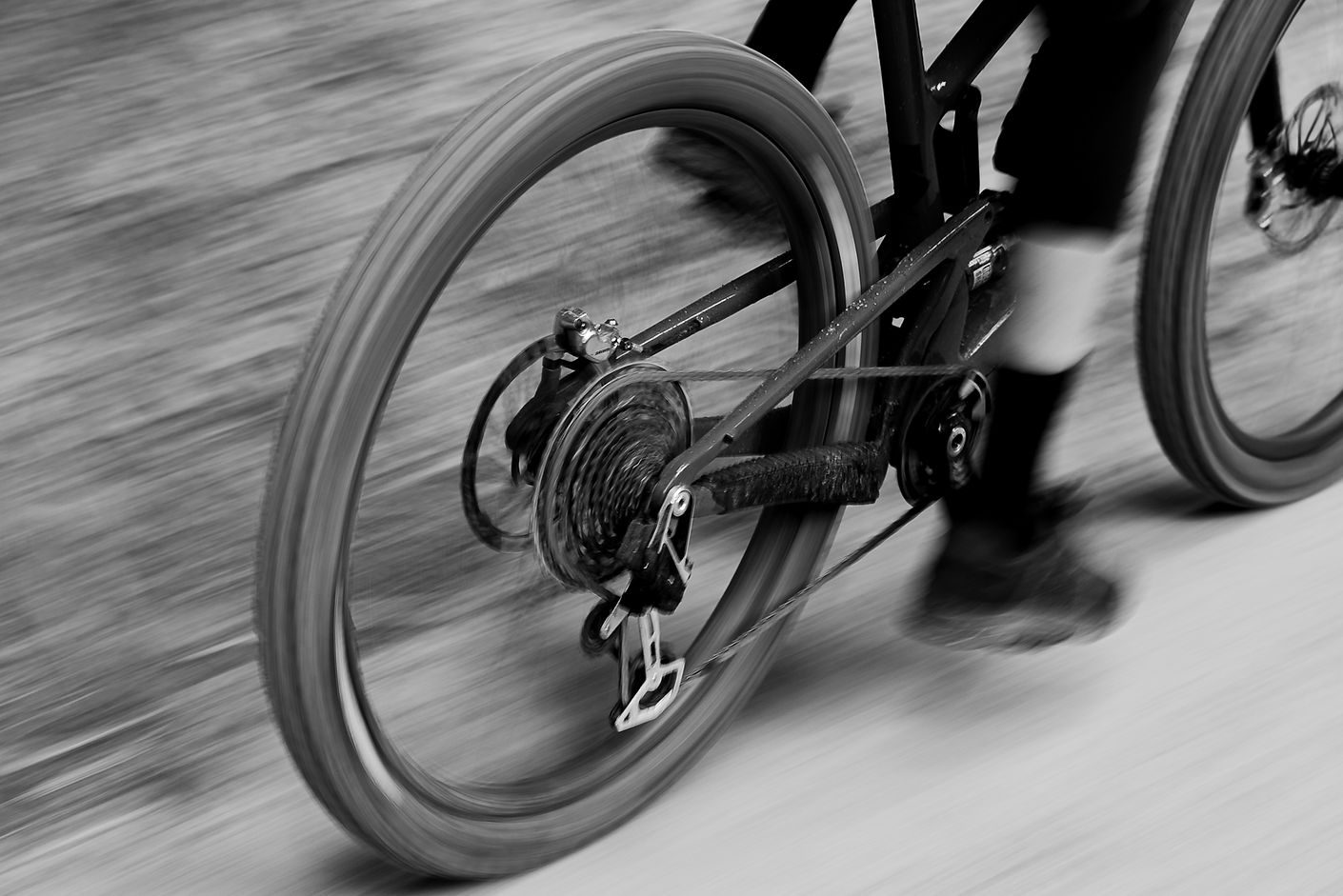
Now, 11 years later, SRAM is back at it. Disrupting the normal; rewriting the rule books - and changing the game for the future. Enter, the new XX1 SL, XX1 and X01.
SRAM has gone back to the drawing board and reimagined the way the derailleur mounts to the frame. Gone is the hanger. In its place, a clevis mount derailleur. The new system is designed to work on bikes that use a SRAM UDH hanger interface.
A couple of years ago, SRAM brought out the UDH (universe derailleur hanger). The purpose of it was to create a better derailleur hanger, that other bike brands could adopt. It was a standard that made sense and, slowly, more and more bike brands have been getting on board with the standard. It was a really good move forward for the bike industry. This new AXS system builds on top of that. The hanger is replaced by a direct mount clevis on the frame. By making this change, you massively increase the stiffness and strength of the derailleur. It's not just held by a single bolt to the hanger; instead, it mounts both sides of the frame. When you induce the hub, frame and axle it creates an interface that is incredibly stiff and really strong, so much so that you can put your bike on the ground, stand on the derailleur on one foot then get back on your bike, ride away and the shifting will still be perfect. That's not possible on a normal hanger set-up - something will bend. I had my doubts about it until Chris showed us - it was super impressive.
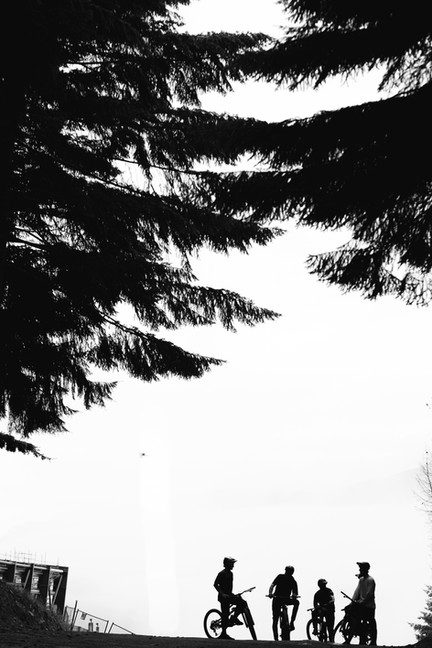
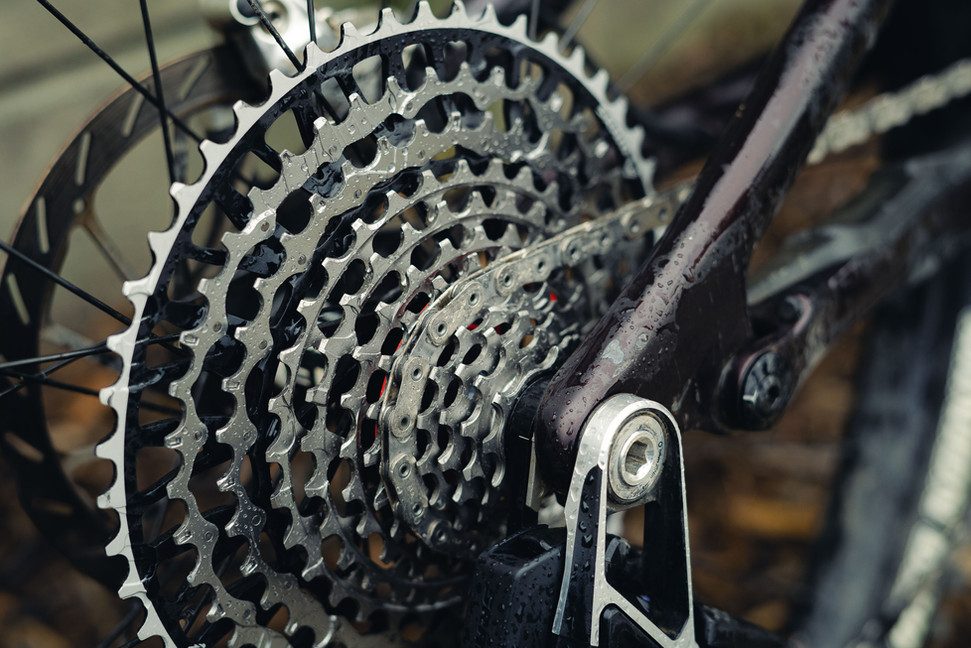
The derailleur keeps the override clutch system that lets the mech move out of the way. It’s fantastic, and something that seems to get used regularly on my current GX AXS. It's saved my hanger from getting bent so many times and I’ve never needed to straighten it like I would have with a normal cable set-up. The clevis mount, combined with the override clutch, gives you a system that should (in theory) be very hard to put out of tune. Overall, it’s a much more reliable system with more pierce gear shifting offering a better experience on the trail.
SRAM has also introduced other technology to these groupsets: flat-top chains that come from their road bike groupsets. These increase efficiency and durability whilst looking flipping awesome. X Sync can now be seen on the cassette, improving the shifting and chain reaction. It really lets you shift under load without the worry of skipping gears. I’d imagine it also helps with the durability of the cassette. The recent SRAM x Dome cassettes have incredible wear life if you replace the chain regularly. I think these new ones will blow them out of the water, as long as you keep up-to-date on replacing the chain when it's worn.
The smart engineers at SRAM Germany really went to town on this, and have gone over everything with a fine-toothed comb. Chris Mandell (SRAM PR) told us that they looked at all the warranty data they had collected over the last 10 years and tried to eliminate as many of the issues as they could. The way to do this was to redesign the whole system and imagine a new way of doing things. The clevis mount gave the ability to produce a far superior product and gave the engineers more ability to optimise every last bit. There are so many little things they have done that all add up and just make it a joy to use - such as the slight bend in the derailleur cage. It looked like it had been bent on the trail but in actual fact, it was supposed to be like that. It helps keep the pulley chain interface better aligned when at the extreme ends of the cassette. There are two different modes to set the cage to, depending on the chainstay length, along with many other little things which have been optimised to create an overall better product.
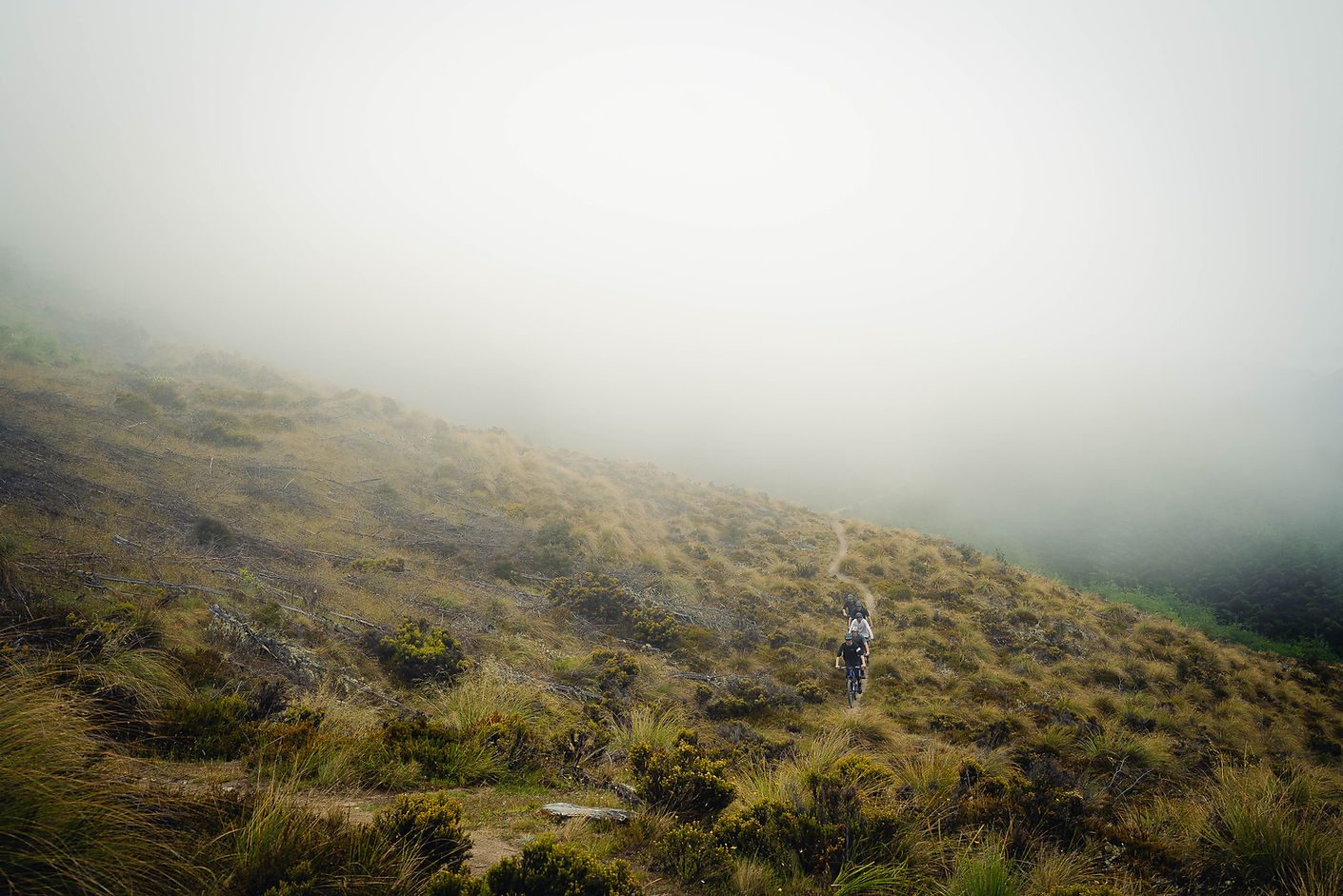
Set up has become easier than ever before. I won’t go into exactly how you go about it - the SRAM technical manuals have that all dialed and are a great source of information.
“We gave this product out to some of our racers this year, on the EWS, and the mechanics keep overthinking the setting up of the system,” explained Chris. “They keep telling us: ‘it can't be this easy!’”. Easier setup leads to fewer problems and fewer tuning errors from the get-go.
Now, I imagine you're thinking; ‘that's all well and good, but what happens if I crash and absolutely smash it into a rock and manage to bend it?’. Well, yes. Shit does happen, obviously. In that case, on a normal hanger mech situation, both of them would probably be a full write-off and due for the bin. In the case of this new system, well, I'd be very surprised if you were able to bend the clevis. It is truly that strong and stiff. The good news is that the rest of the derailleurs are rebuildable. If you do damage a part, it will most probably be replaceable. You can remove the cage without using any tool. A simple little ‘tap’ while unscrewing the cage will loosen it up. The tension spring and clutch are now built into the cage, so servicing and cleaning these parts has become super easy and something that can be done in no time. The face plates of the parallelogram are replaceable as well. Is your mech looking a bit scratched up and tired after a year of use and abuse? Simply slap some new ones on, and it will look brand new. I’m really behind this - I love when brands make their products rebuildable and serviceable; products that they want to see being used for years and years; products that you can fix rather than just replace. It is the way our industry should be heading, rather than adding to a ‘throwaway society’ just because one tiny part breaks or wears out.
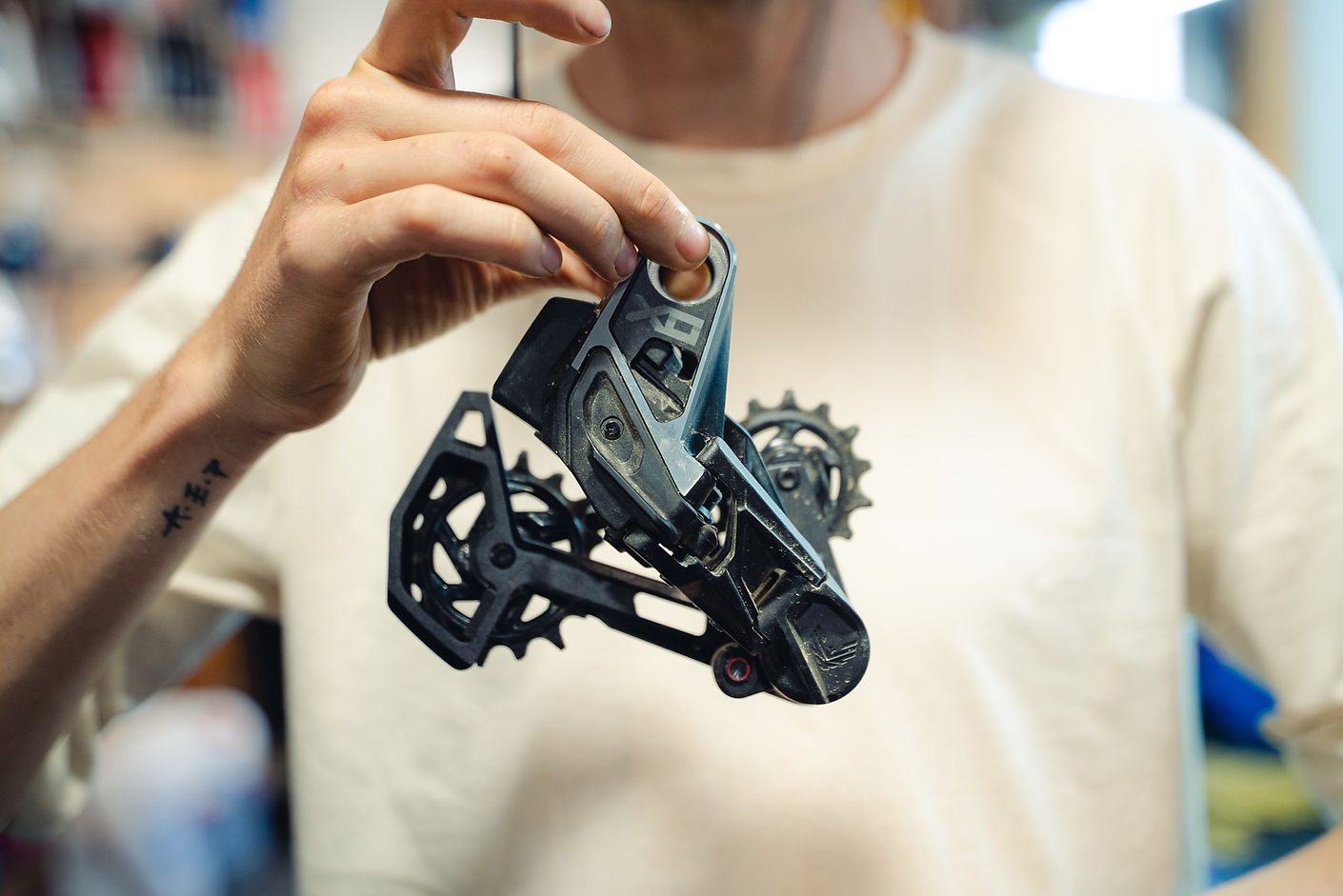
The derailleur looks slick – it’s futuristic looking, almost taking some of that cyberpunk aesthetic and feel that Hyundai is using in their cars. There are sharp lines throughout, highlighted by the brushed alloy metal on the black derailleur. It’s a solid unit of a mech and it looks like you could take this thing through the gates of hell and come out unscathed. The new cassette is a work of art as well. As you looked closer, you realise SRAM have added X Sync to the cassette as well. Mind-blowing stuff. The new shifter - or pods as SRAM refer to them as – have a more traditional, ergonomic design compared to the previous generation. It uses a two-button system, one placed above the other. The rubber paddles require a push, making them feel like a shift versus a tap. The return spring built into the paddle gives you that positive, almost mechanical, feel. Personally, though, the pièce de résistance was the new XO cranks. They are gorgeous. A change from carbon to alloy, they are unlike anything else on the market (well, minus 5DEV). They're minimalist, cyberpunky and abstract. You can tell they used what they learned from their AI crank program and applied it to this. There’s a hole near the crank bolt, highlighted by the brushed metal accent that gives the look of a drawing compass. The bushed metal has been placed in the part of the crank where you’re most likely to get foot rub, thus keeping the crank looking brand new for years, for us chronic shoe crank pedal rubbers. The final piece that set these off, is the return of the bash guard. Why these ever feel out of fashion I do not know, but I’m so glad to see them back. They mount on the chainring and can be removed if you see fit. I’m such a fan of these.
From the first shift, you realise this is something special - it’s not just another groupset, another new drive chain. It’s more than that. It's the crispest shifting I've ever experienced. It has such a positive feel to it. There is that reassuring ‘clunk’ as it moves into gear - almost mechanical, but with the precision of electronics. It’s lightning fast; instant, and precise. Even under load, in the worst possible moment to shift, it was still absolutely light years ahead of everything else. Everything you have learned about not shifting under load, you can now throw out the window; this new system does it with ease. I think a big factor of this is due to the added stiffness of the direct mount and the X Sync teeth on the cassette, but SRAM has also made a lot of tiny tweaks that have really optimised the system.
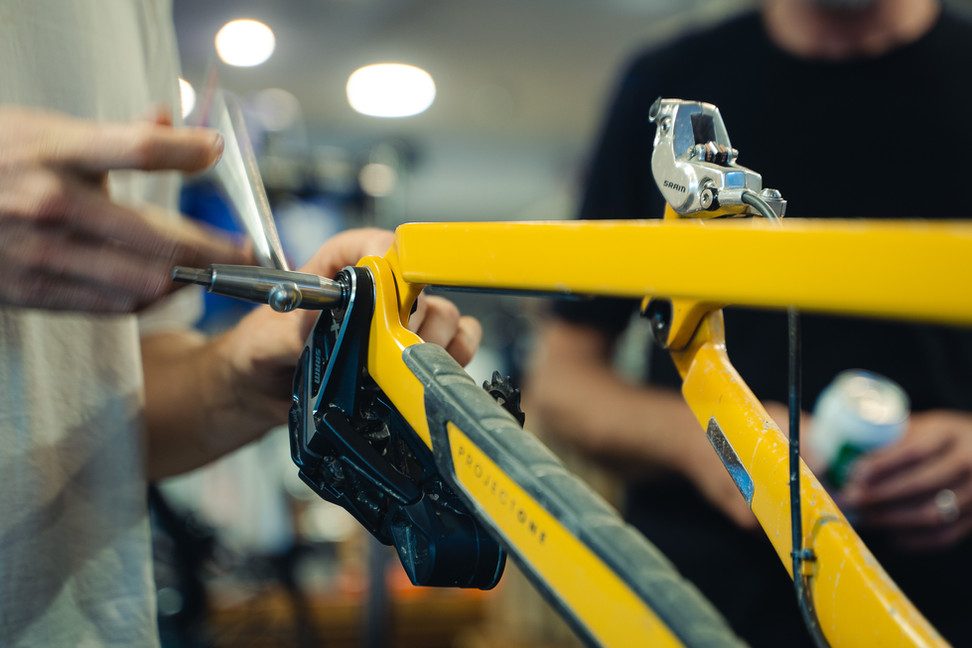
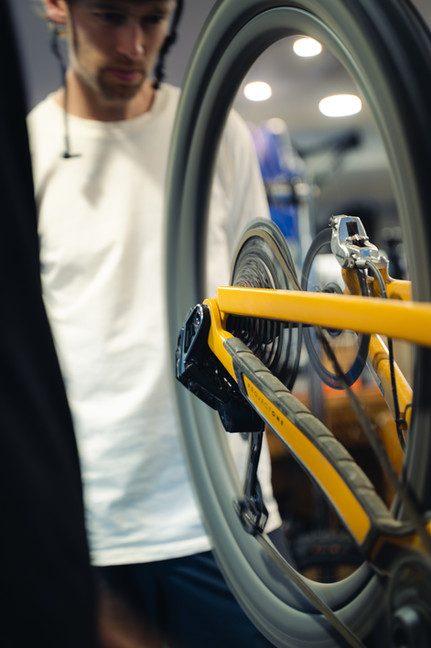
The more I rode the product, the more I liked using it - it's an absolute joy to use. You just know that when you push the button to shift, it will do it – there’s no worrying about a little under-power half pedal to help it shift. Just pedal as you would, and the chain will shift on the cog. It really does improve the enjoyment of climbing. The slightly altered rations in the cassette were also a welcomed improvement. No more big jumps between the 42t to 52t. Instead, you 44 - 52 jump and it feels a lot nicer. It doesn’t sound like a lot, but it makes a difference, with less of a sudden change in ratio. It's hard to put into words the feeling of the drive chain over the previous stuff; overall you’ll just have a much nicer time while shifting. A good analogy would be comparing driving a car from ten years ago to driving a brand new, modern car with all the bells and whistles. Both do the same thing, but the newer car is going to be easier and arguably more enjoyable to drive; more relaxing, quieter, with more features to assist you.
SRAM has really knocked it out of the park with this. It’s hard to think about how you can improve on what they have delivered here. It’s truly fantastic. It’s robust, designed from the ground up for mountain biking, and is finally moving on from the hanger system that came from road bikes so many years ago. I’m a massive fan of the ability to be able to rebuild and replace the parts on the derailleur.
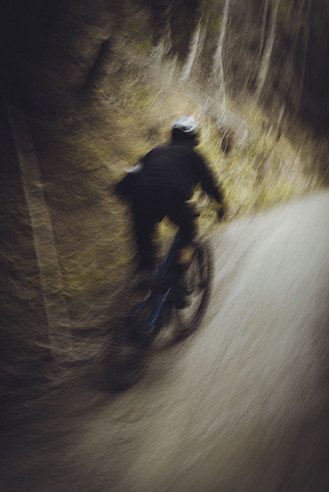
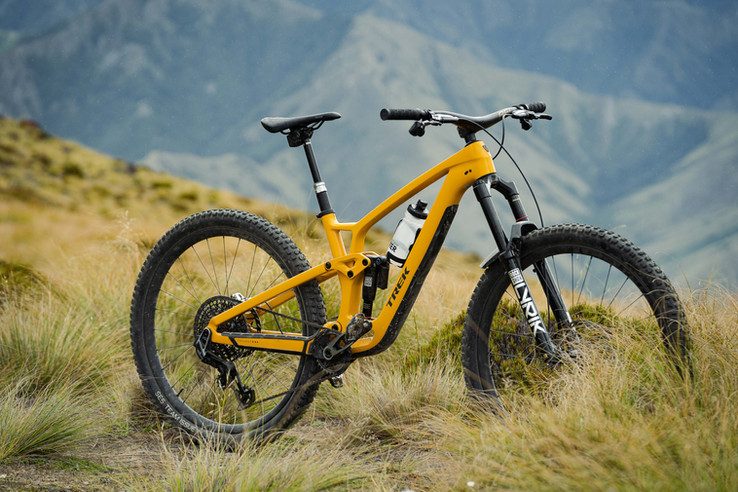
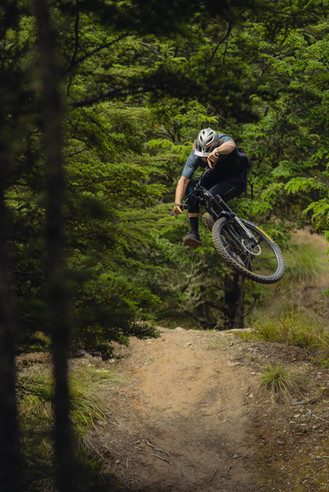
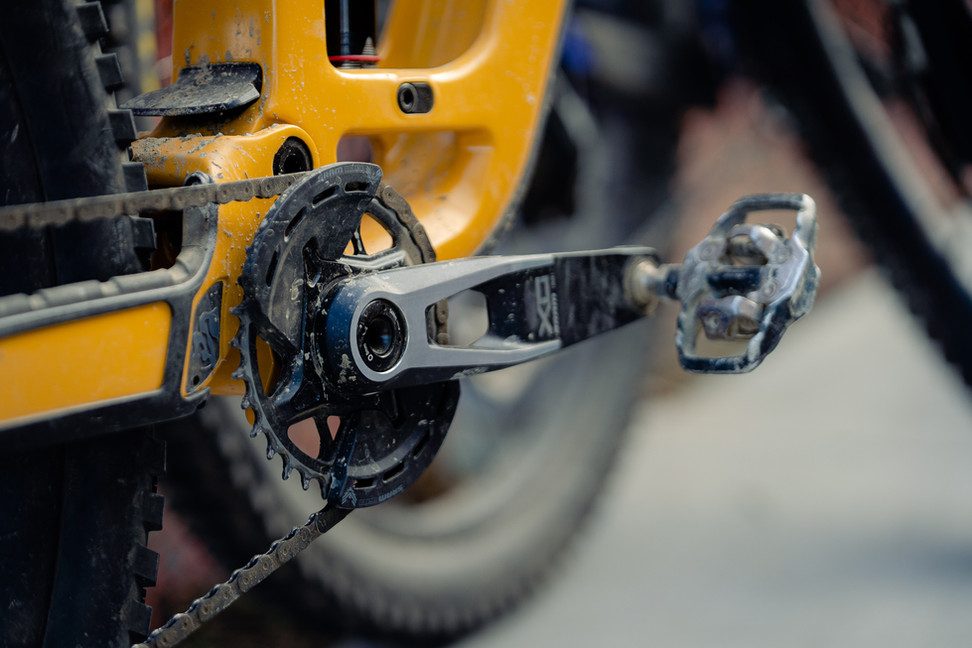
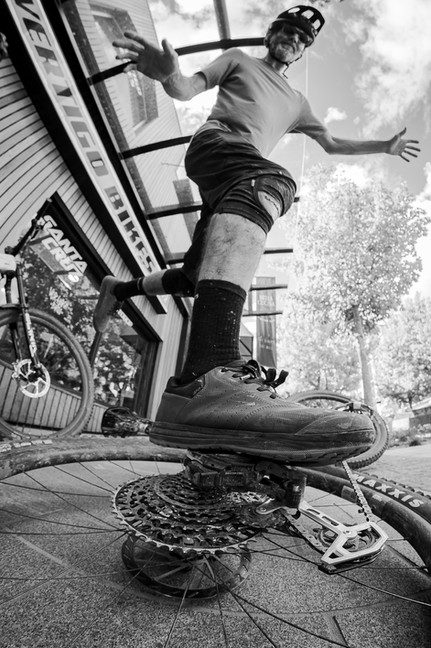
The shifting is light years ahead of the others. Will this groupset make you ride faster? You could argue that it will, but I don’t think that’s the right question to ask. Will this groupset enhance the experience of your ride? 100% it will. It’s an absolute joy to use, and makes you want to shift more – plus, it’s easy to set up. It’s built to last, is robust, and strong, so you don’t really have to worry about it. Going off the reliability of the previous AXS stuff, which was - in my opinion - the best out there, this should be able to survive an apocalypse. I’m not normally the sort of person to fork out for an expensive drive chain. Instead, I normally run the cheapest I can get away with. Gen 1 of AXS started to change my mind about that but this new stuff has 100% flipped my view on it. It's something that's worth saving up for and putting on your next bike. It's something worth investing in. You won’t regret it.
Hat’s off to you, SRAM. Well done.
Words & Photography: Jake Hood
Video: A new view of the Old Ghost Road
Old Ghost Road, Lyell, Mokihinui River, Westport 85km one way | Advanced Tramping, Grade 4 Mountain Biking
One of the esteemed Great Rides of New Zealand, the 85km-long Old Ghost Road is Aotearoa’s longest single-track backcountry trail, and one of the most incredible multi-day backcountry experiences in the country. The adventure takes riders and trampers back in time along a shared-use and long-forgotten goldminers’ road.
The new ride-through safety video, launched today, was produced by the NZ Mountain Safety Council (MSC) in collaboration with the trail’s creator and operator, the Mokihinui-Lyell Backcountry Trust. The video guides visitors through the amazing trail and is packed with advice on how to get the best experience out of the trail.
This impressive trail weaves through ancient forests and diverse rugged alpine environments. Combined with the infamous West Coast weather; frequent heavy rain, strong winds, snow, and freezing temperatures, even in the height of summer, means the Old Ghost Road is a true adventure.
The new video highlights the varied conditions mountain bikers can expect, covering important tips including how to pack a balanced bike, a suggested packing list, the common risks and hazards, and key decision-making points and pit stops.
Plan My Walk by MSC can help those planning to tackle the Old Ghost Road as it includes the new video any relevant weather alerts, a weather forecast, and bikers can use the gear list and then create a trip plan to share with a trusted contact.
MSC would like to acknowledge and thank Ngati Waewae for filming in their Takiwa.
Watch the video here:
-
Learn more about Backcountry Mountain Biking
-
Check if it’s the right grade for your experience level on the Old Ghost Road here or the DOC website here
-
Get Local information from the Wesport iSITE or Nelson iSITE or find a DOC Visitor Centre
-
See how it compares to other trails in the Ngā Haerenga New Zealand Cycle Trail Great Rides network, perhaps this isn’t the right track for you or your group?




